3. Administration¶
As an administrator, you extra capabilities can be explored on your page at the top right corner. Click on your name to view the drop-down administration menu. In this tutorial, we’ll cover the important aspects of your administrator functions.
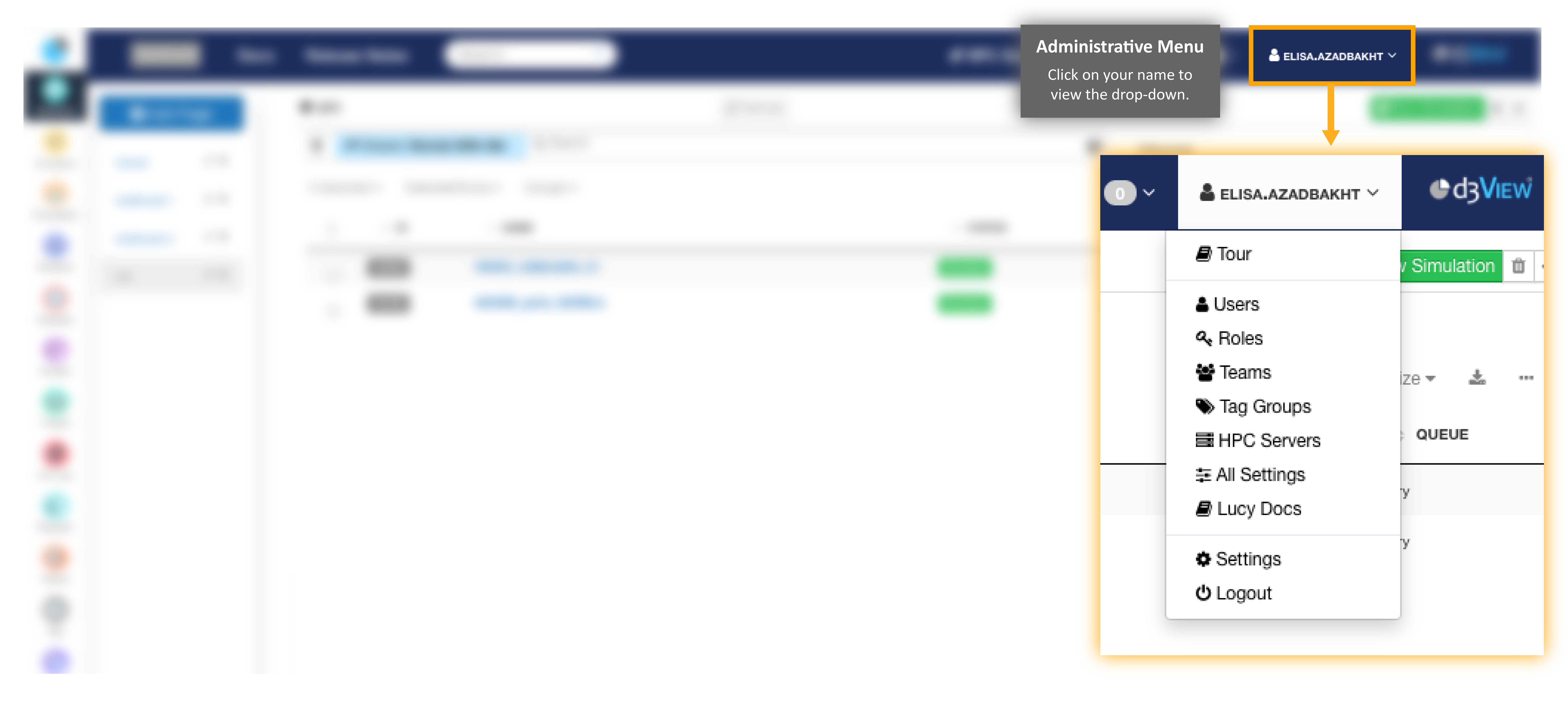
Figure 1: Administrative Menu
What Will Be Covered:
- Users
- Adding a User
- User Logins
- Roles
- Teams
- HPC Servers
- Editing HPC Servers
- HPC Utilization
- All Settings
- Post Processors
- LDAP Settings
- Logs
- Lucy Docs
3.1. Users¶
Click on the Users option in the Administrative Menu to get started.
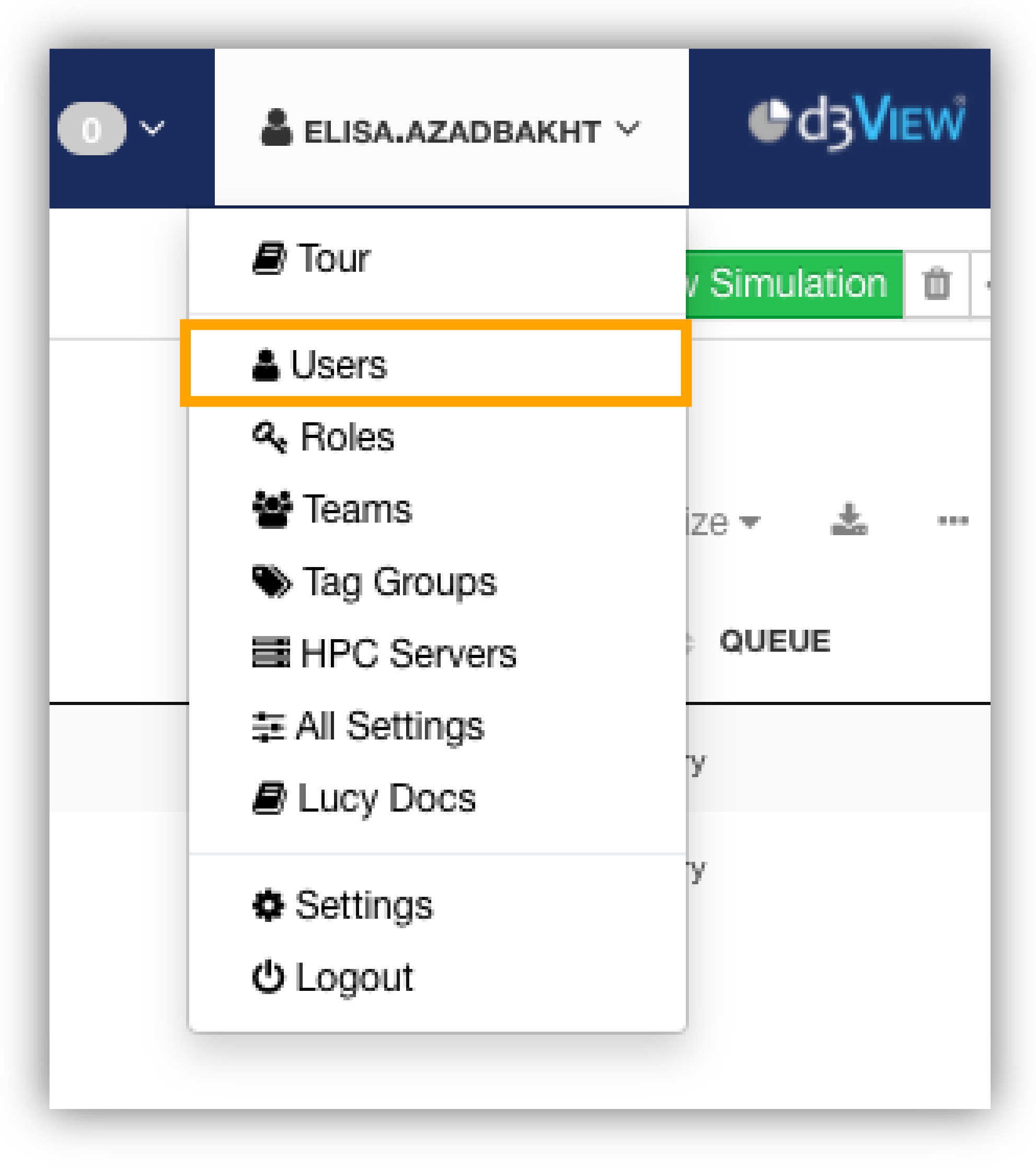
Figure 2: Users Option
The users section shows you thumbnail views of all users under your administration. You can perform actions such as edit, view or impersonate on individual users.
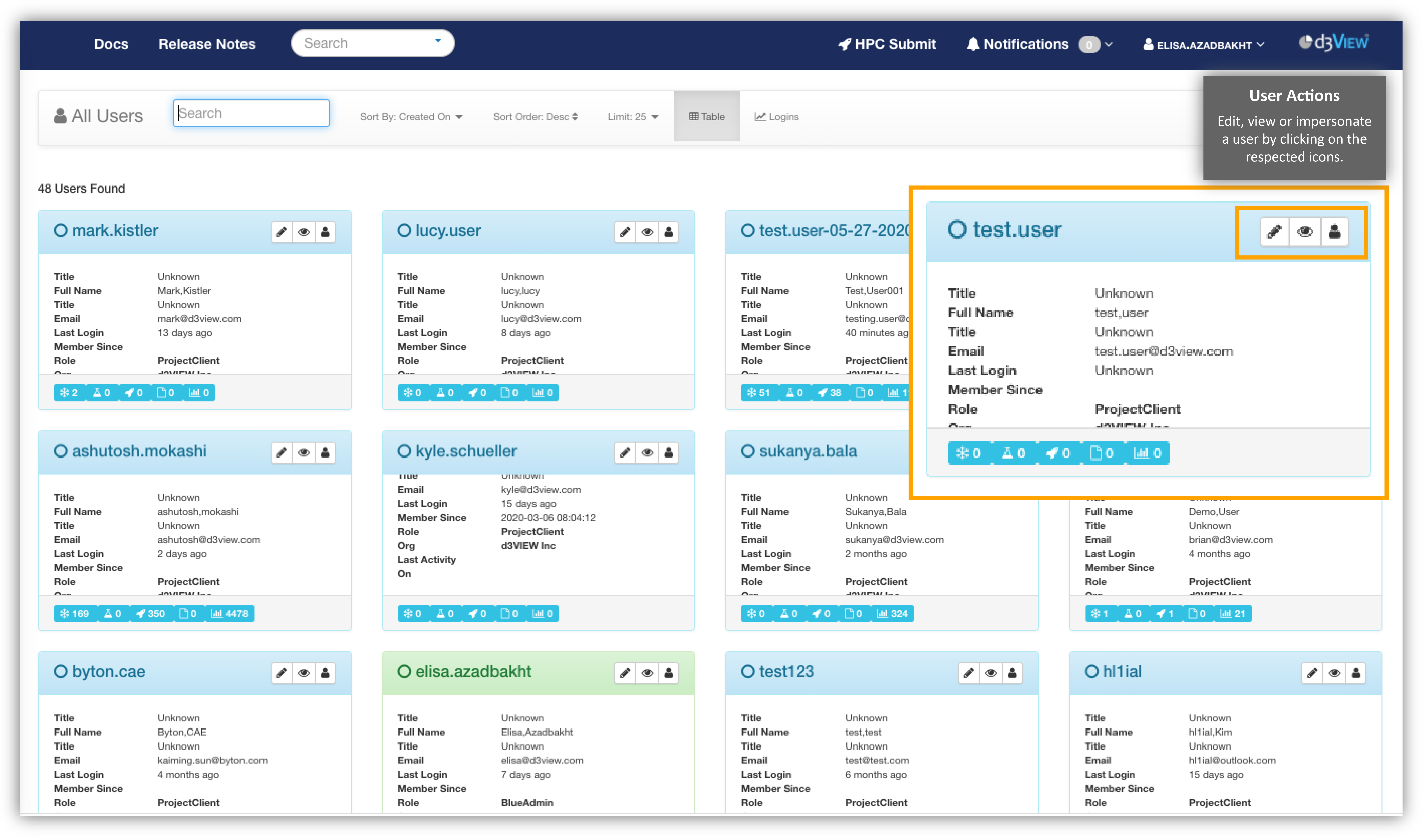
Figure 3: All Users
Where Am I?
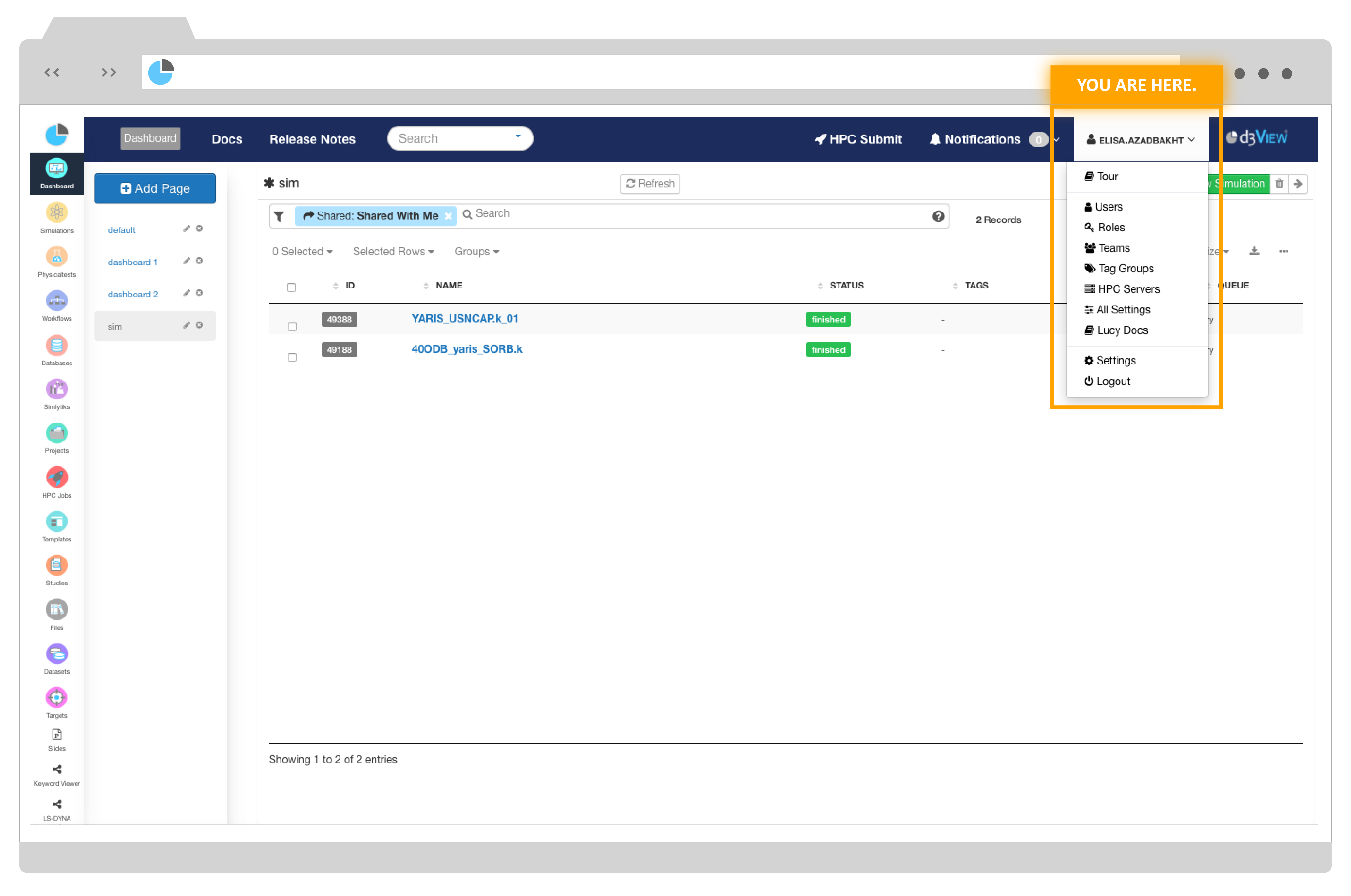
Add User¶
Click on “Add User” at the top right to create another user. The window for creating or editing a user is basically the same. Here, you can choose a role for the user.
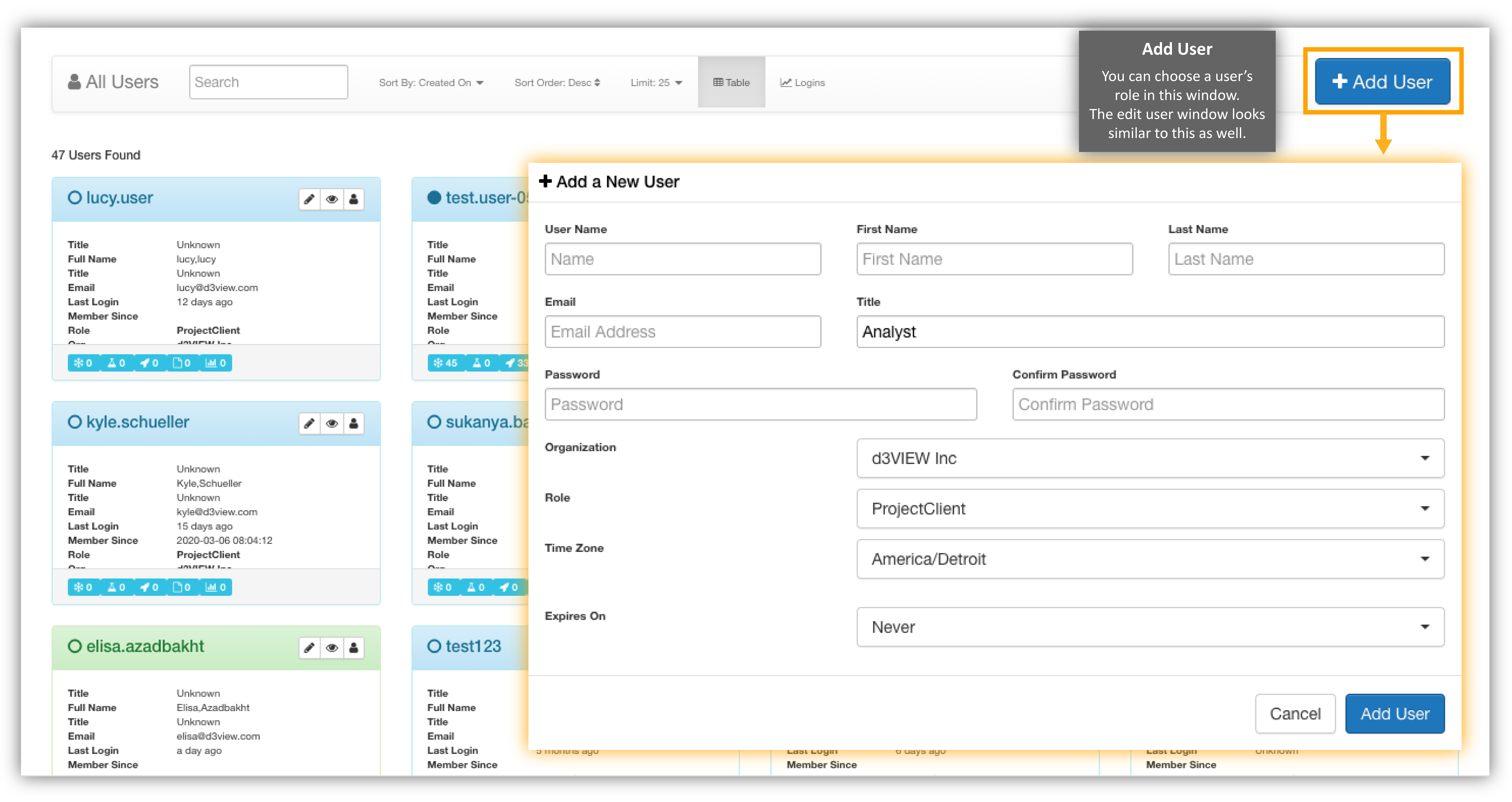
Figure 4: Add User
User Logins¶
Click on “Logins” on the grey bar next to “Table” to see which users logged onto the platform on particular dates.
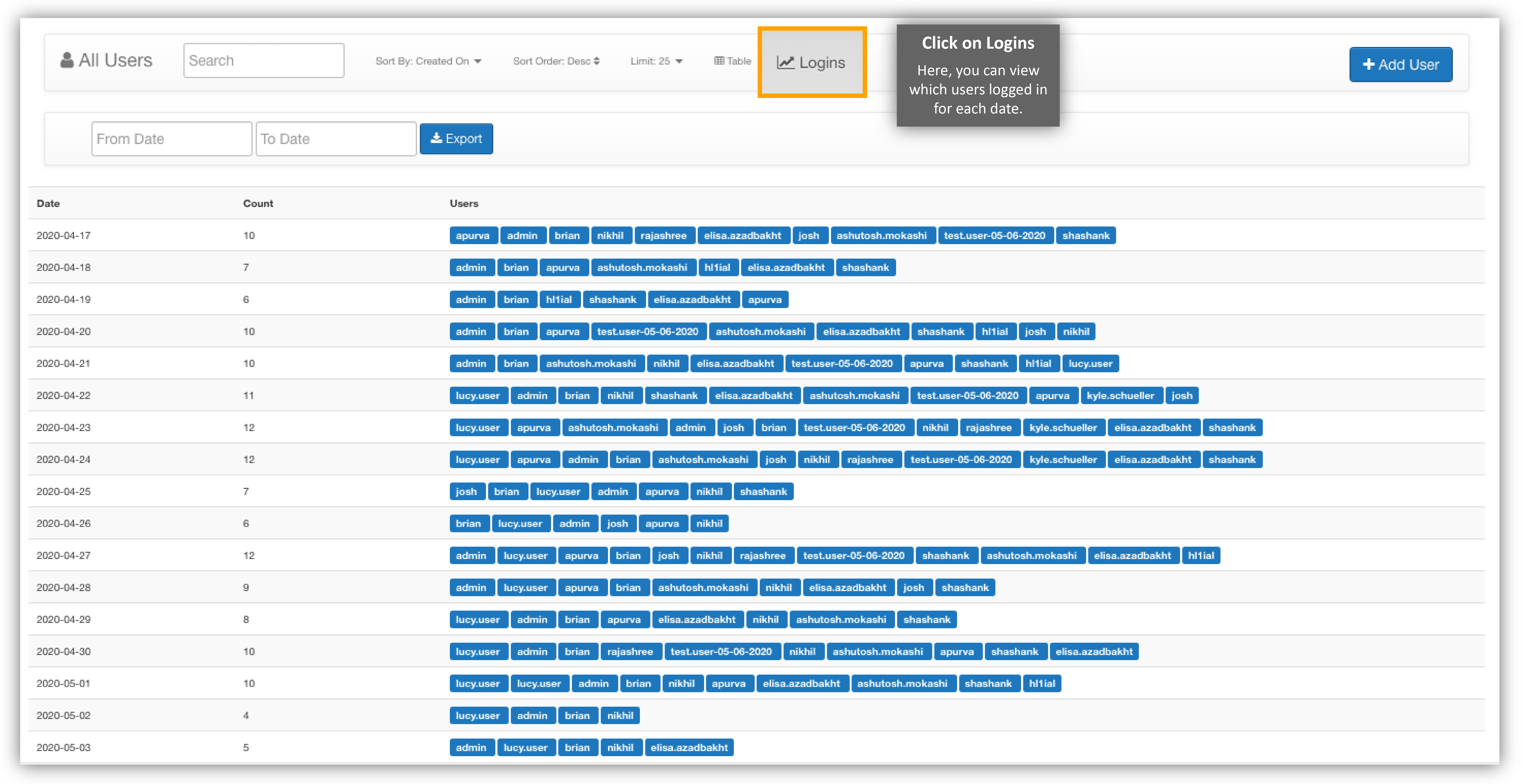
Figure 5: User Logins
Below video shows how to add user and manage them.
3.2. Roles¶
Roles make it easier assign permissions to users. You can give reading or writing capabilities to a particular role and give that role to certain users.
Click on the Roles option in the Administrative Menu to get started.

Figure 6: Roles Option
New Role¶
Click on ”New Role”. Make sure to give a new role a name and description as well as set reading and writing capabilities for the options.
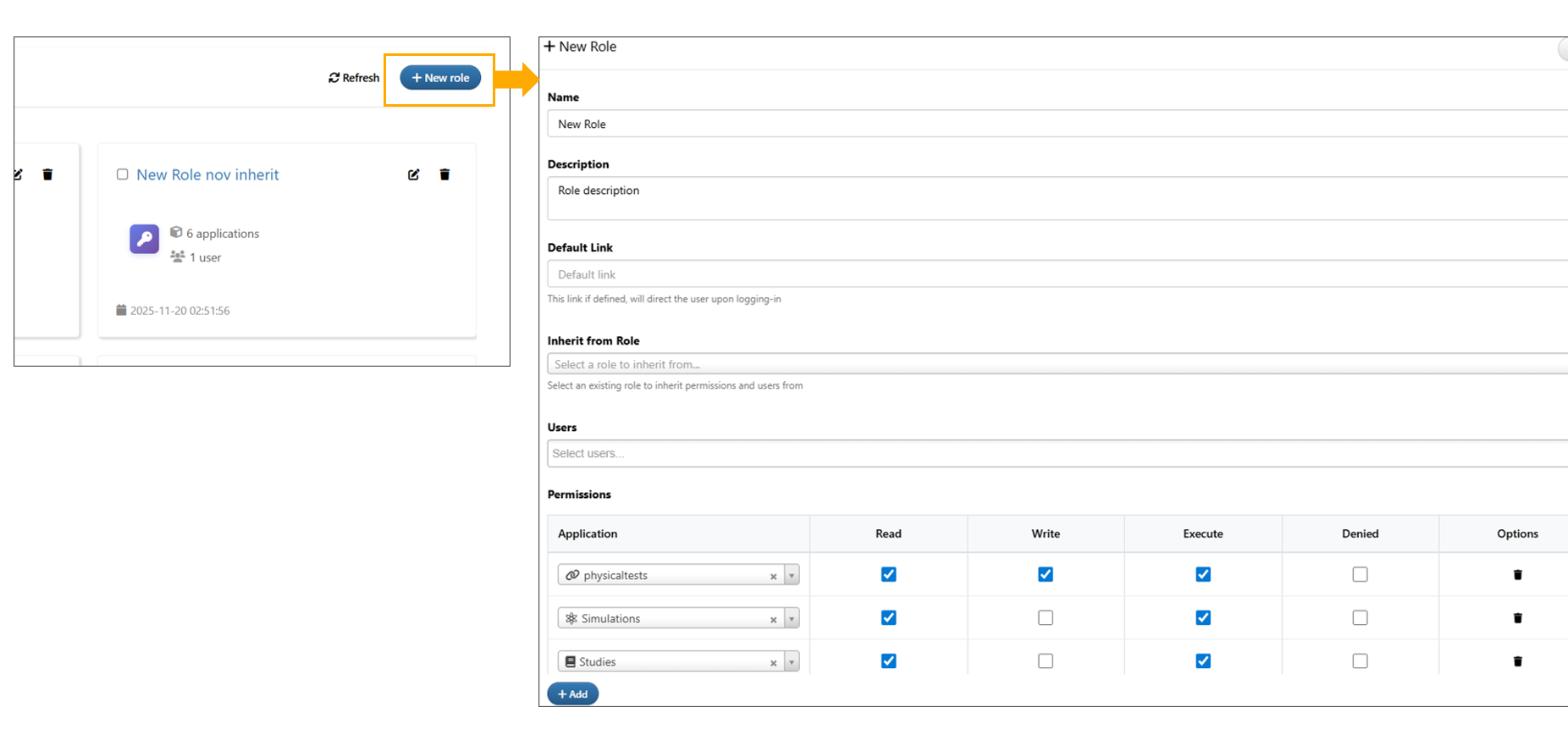
Figure 7: Create a New Role
Roles with Applications and Permisisons.
Applications with Permissions can be added to Roles and users can be assigned to the Roles while creating or while editing a Role

Each role in the page will show the count of Applications and Users.

Right context menu options like Edit, Meta data , Inhert role and Delete options are available for Roles.

Users with Application Permissions¶
The User will be seeing only the applications available in roles with respective permissions.
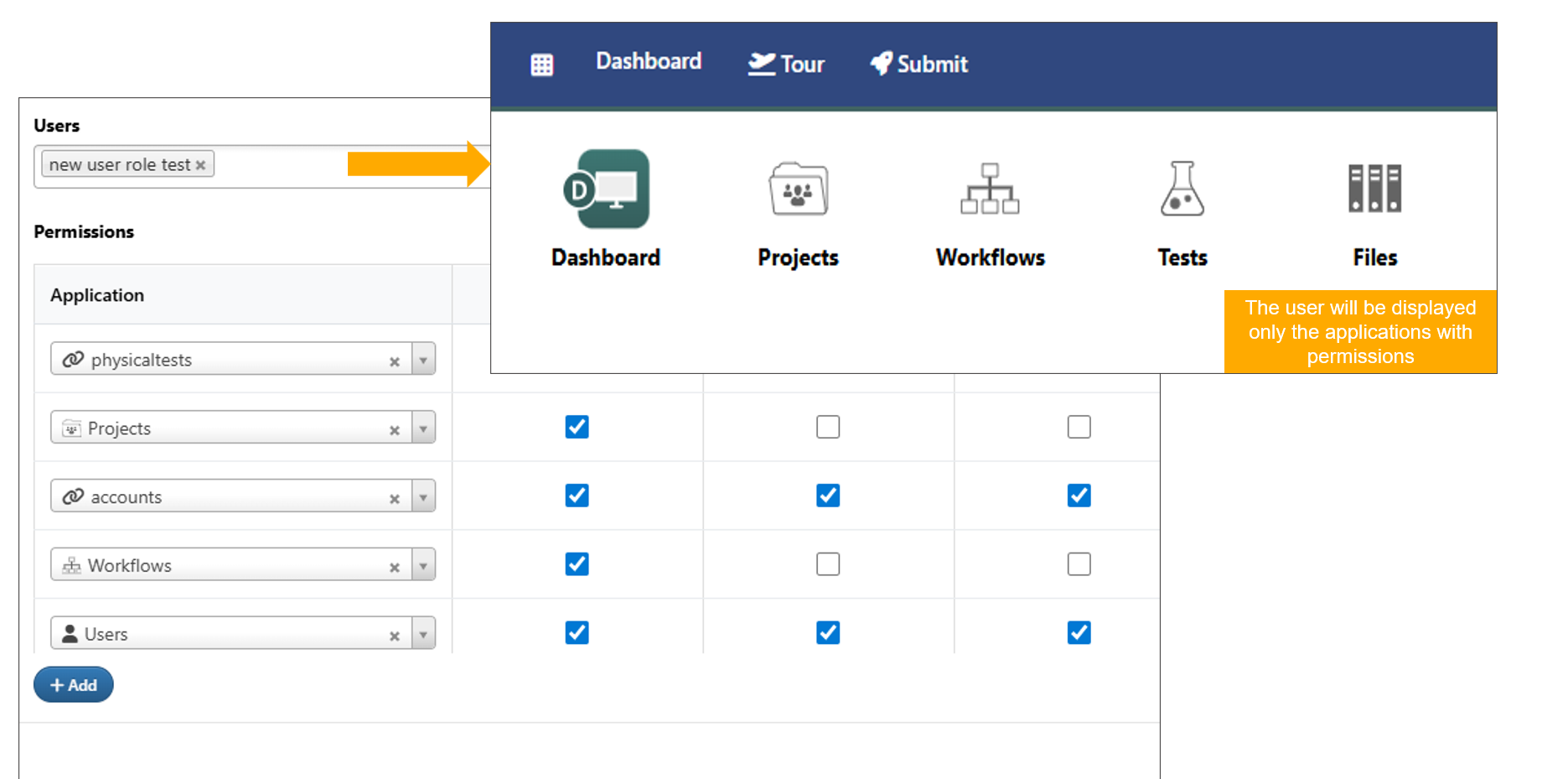
Metadata¶
Metadata for each Role is now viewable in the sidebar, including permissions and associated users, by clicking on the Role’s name.
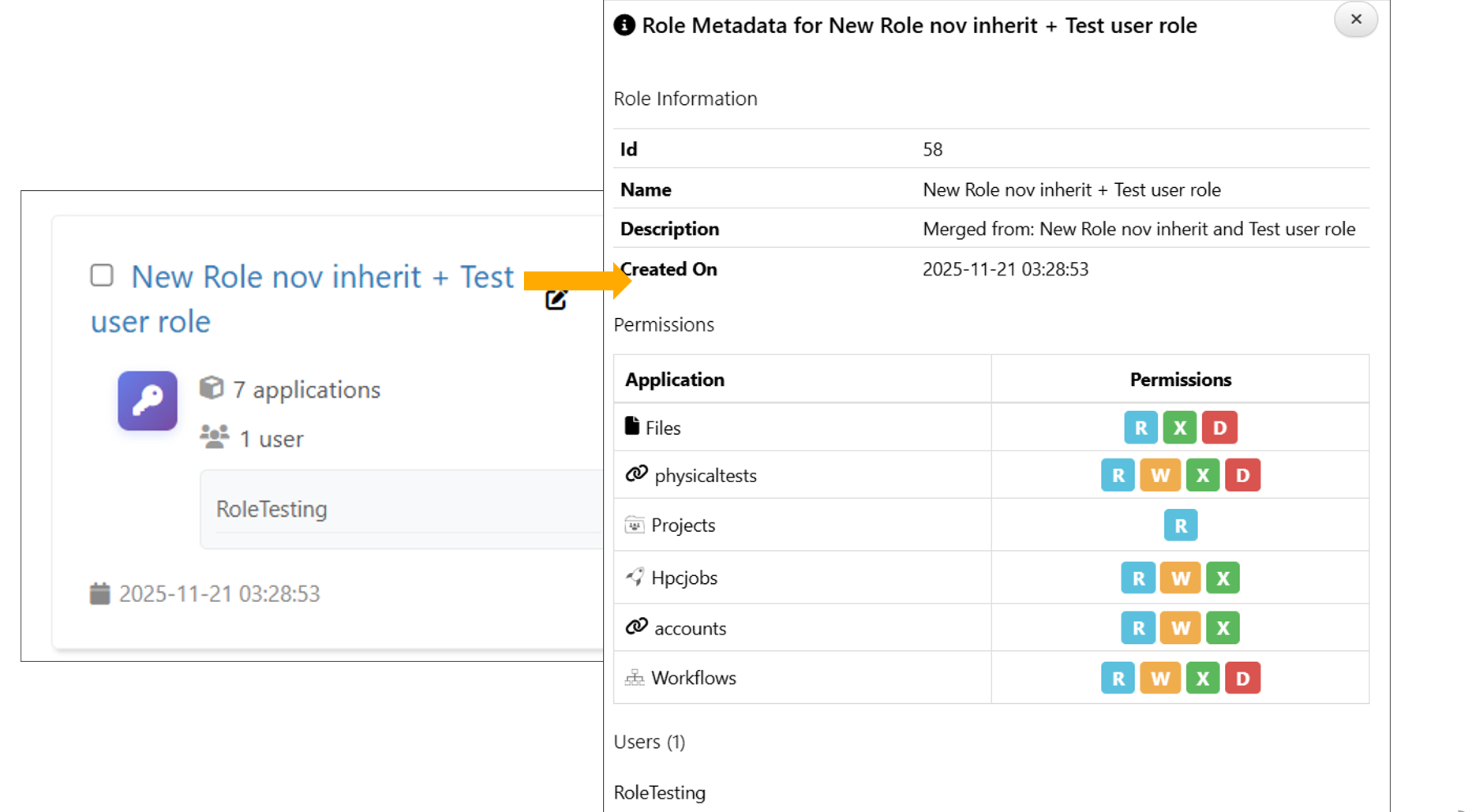
Merge Role¶
Selecting two roles now shows a new “Merge” option, allowing you to combine their users and permissions into a single role.
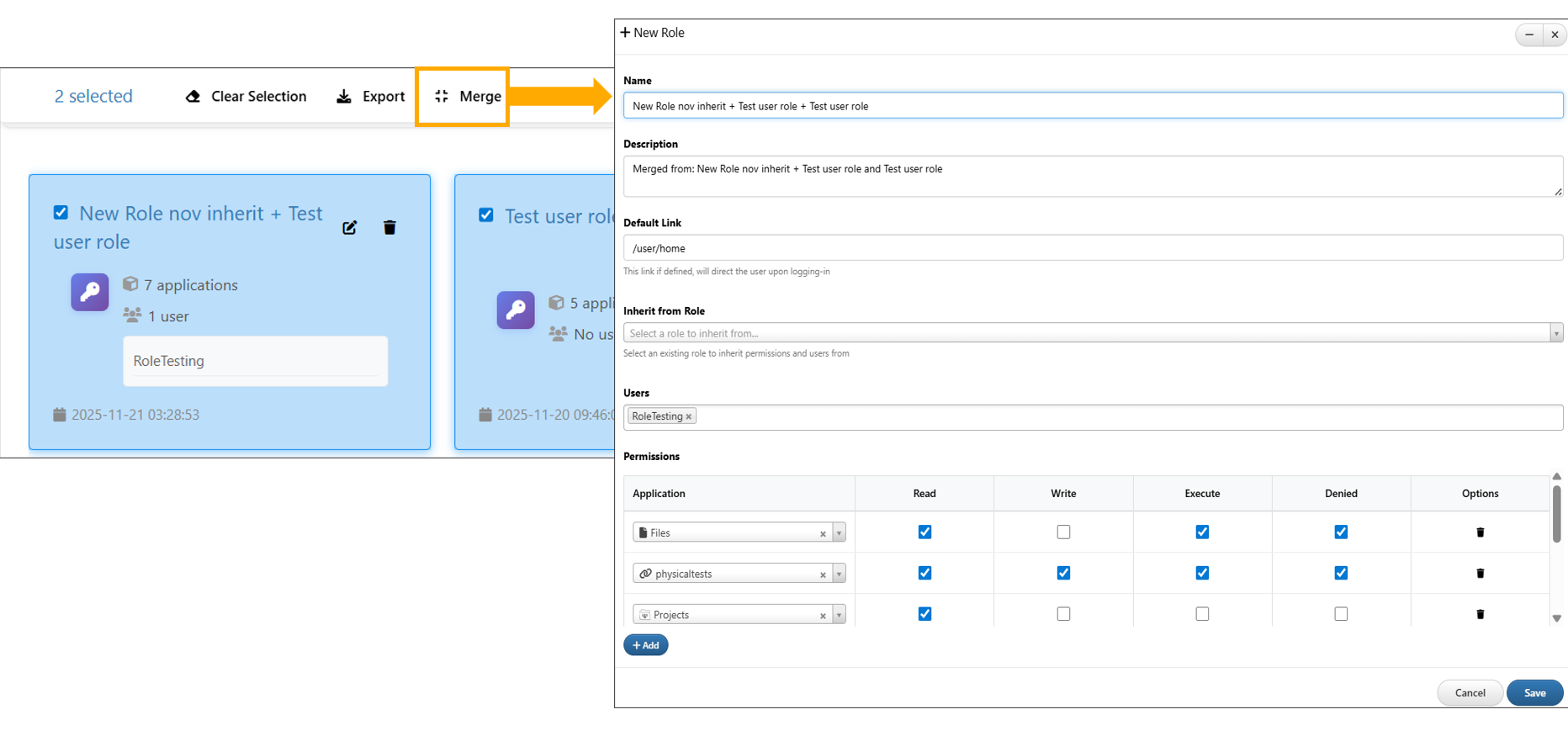
3.3. Teams¶
You can organize your users into teams. Replicate your office or labs’ teams onto the platform so you can stay more focused and efficient.
Click on the Teams option in the Administrative Menu to get started.
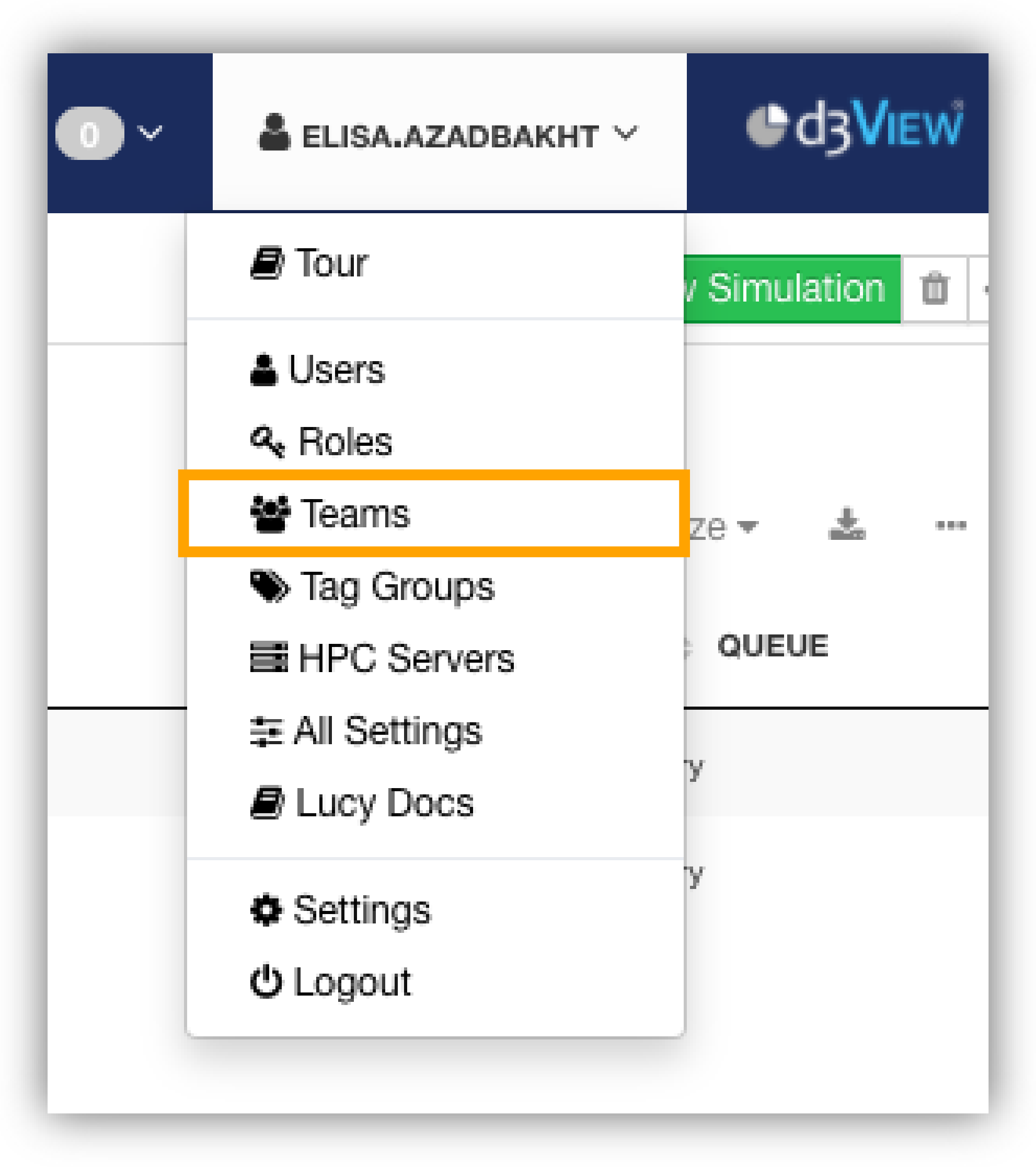
Figure 8: Teams Option
Add Team¶
Click on “Add Team” at the top right corner to create another team. In the new window, choose a name, description and users to populate you team.
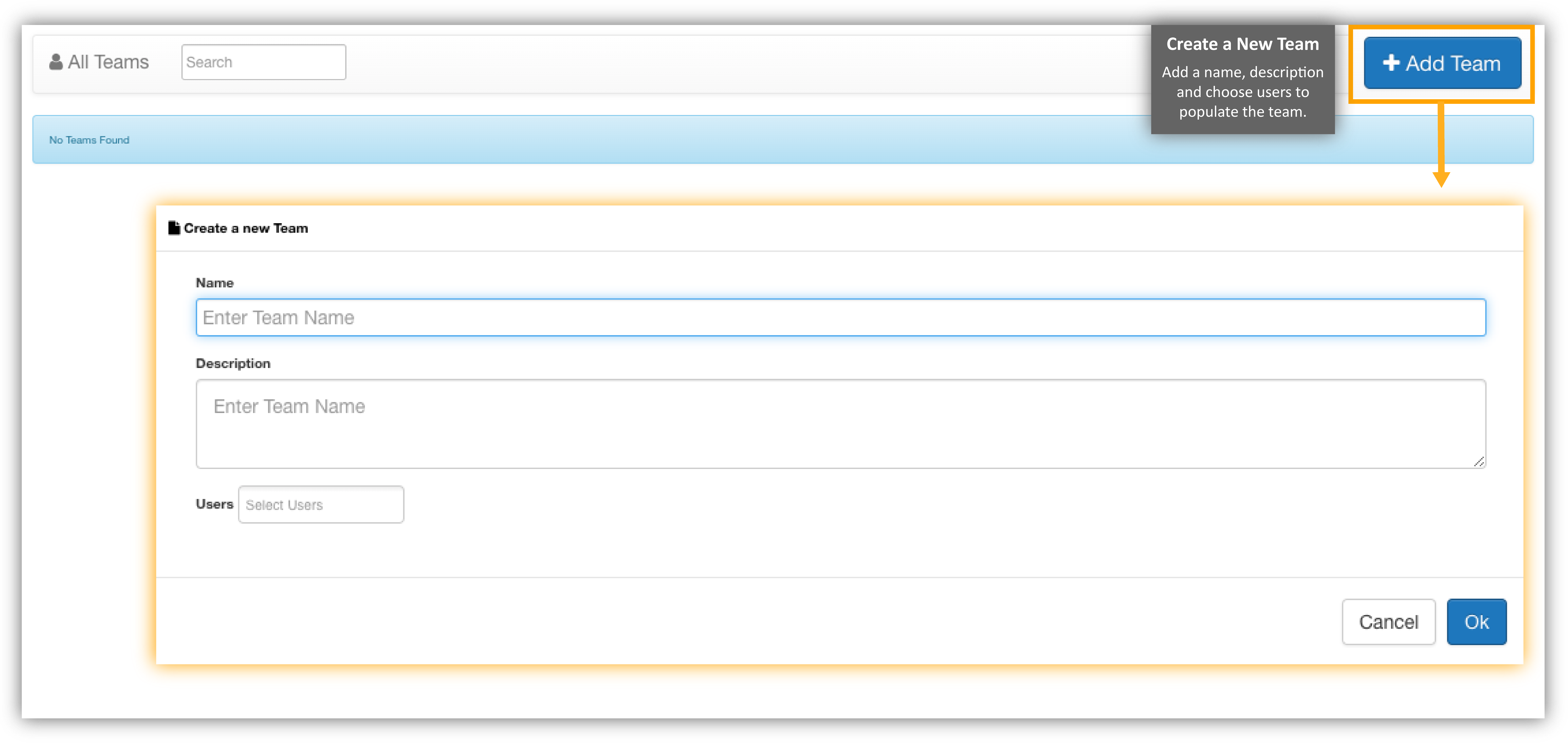
Figure 9: Add a Team
Where Am I?

3.4. HPC Servers¶
Click on the HPC Servers option in the Administrative Menu to get started.
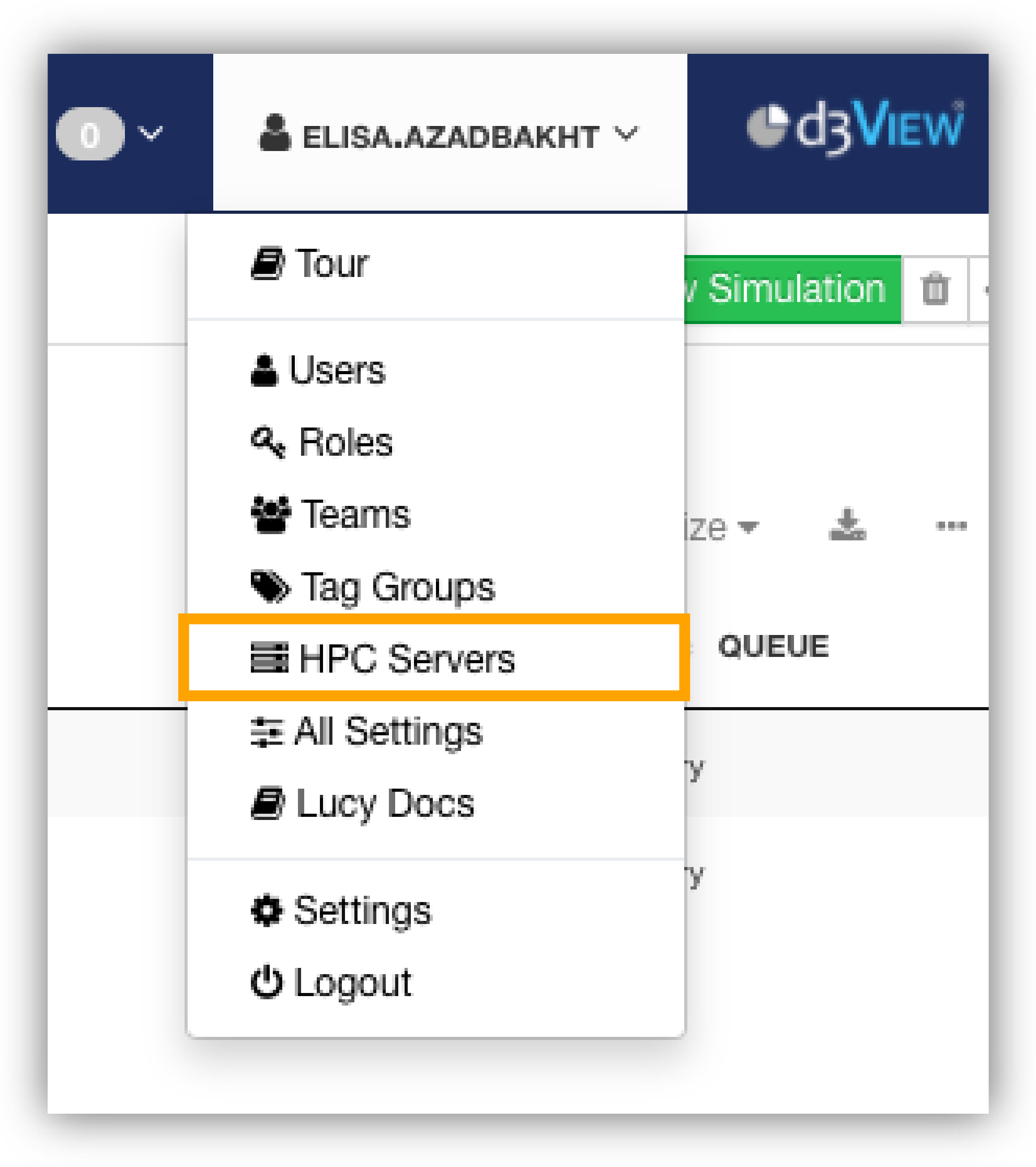
Figure 10: HPC Servers Option
View thumbnails of all your HPC servers and perform actions on them such as viewing utilization, editing, duplicating, exporting or deleting.
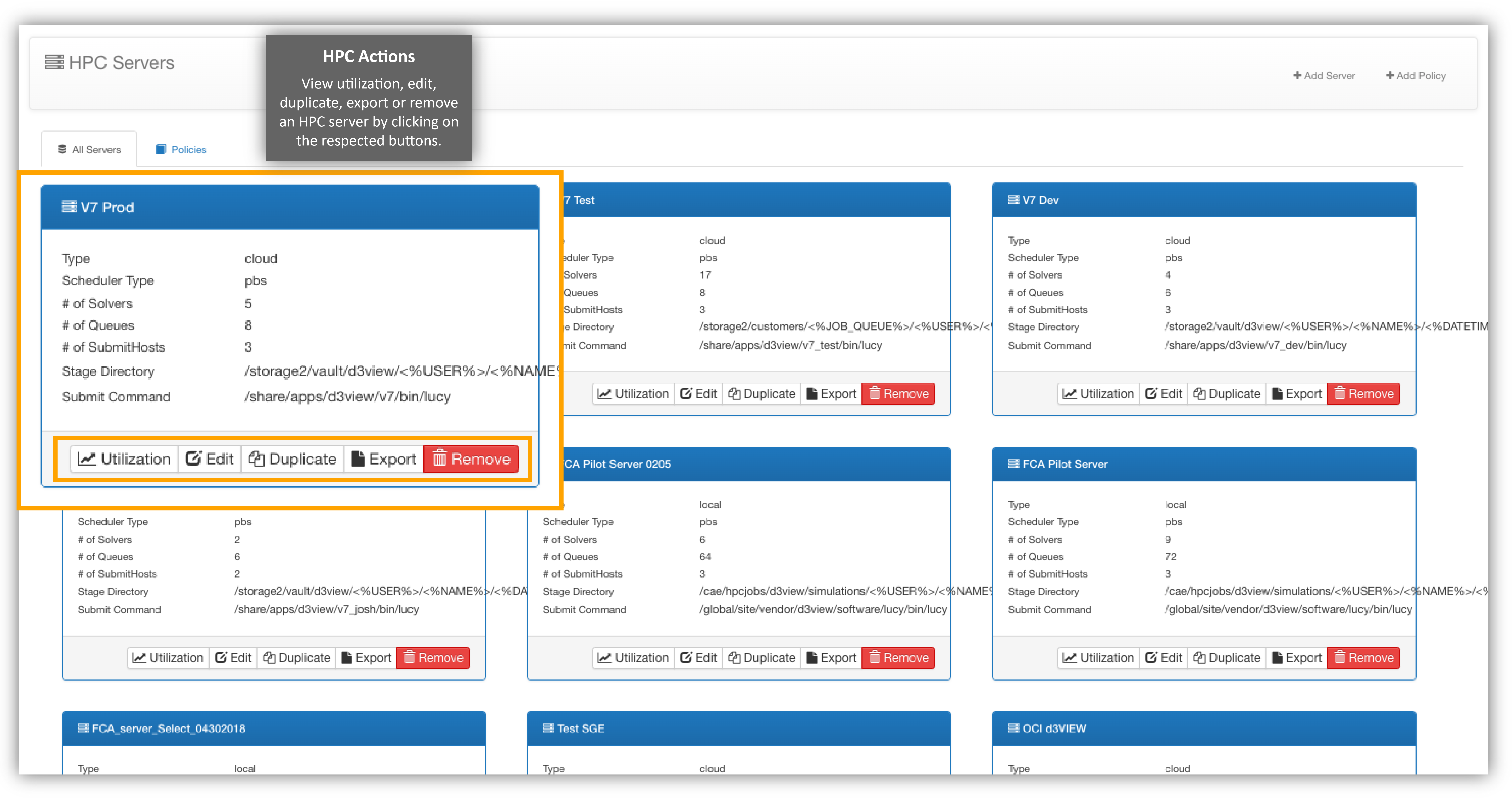
Figure 11: All HPC Servers
Where Am I?

Add an HPC Server¶
Click on ”Add Server” at the top to start a new HPC server configuration.
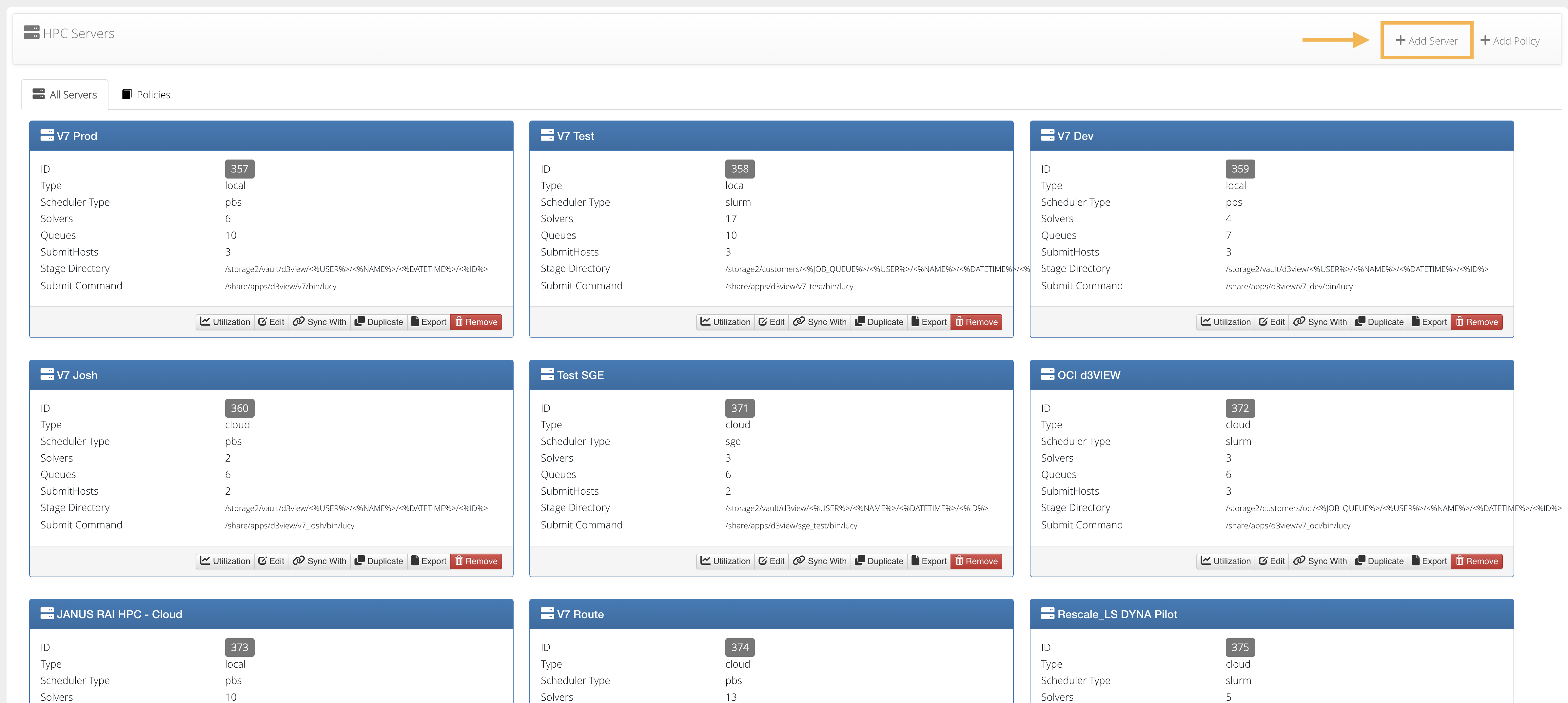
Figure 12: Add an HPC Server
Under “Choose Step” at the top, pick General Information in the drop-down. Make sure to name your server, include the host name and IP address, as well as choose type of server. d3VIEW works with Linux for the operating system.
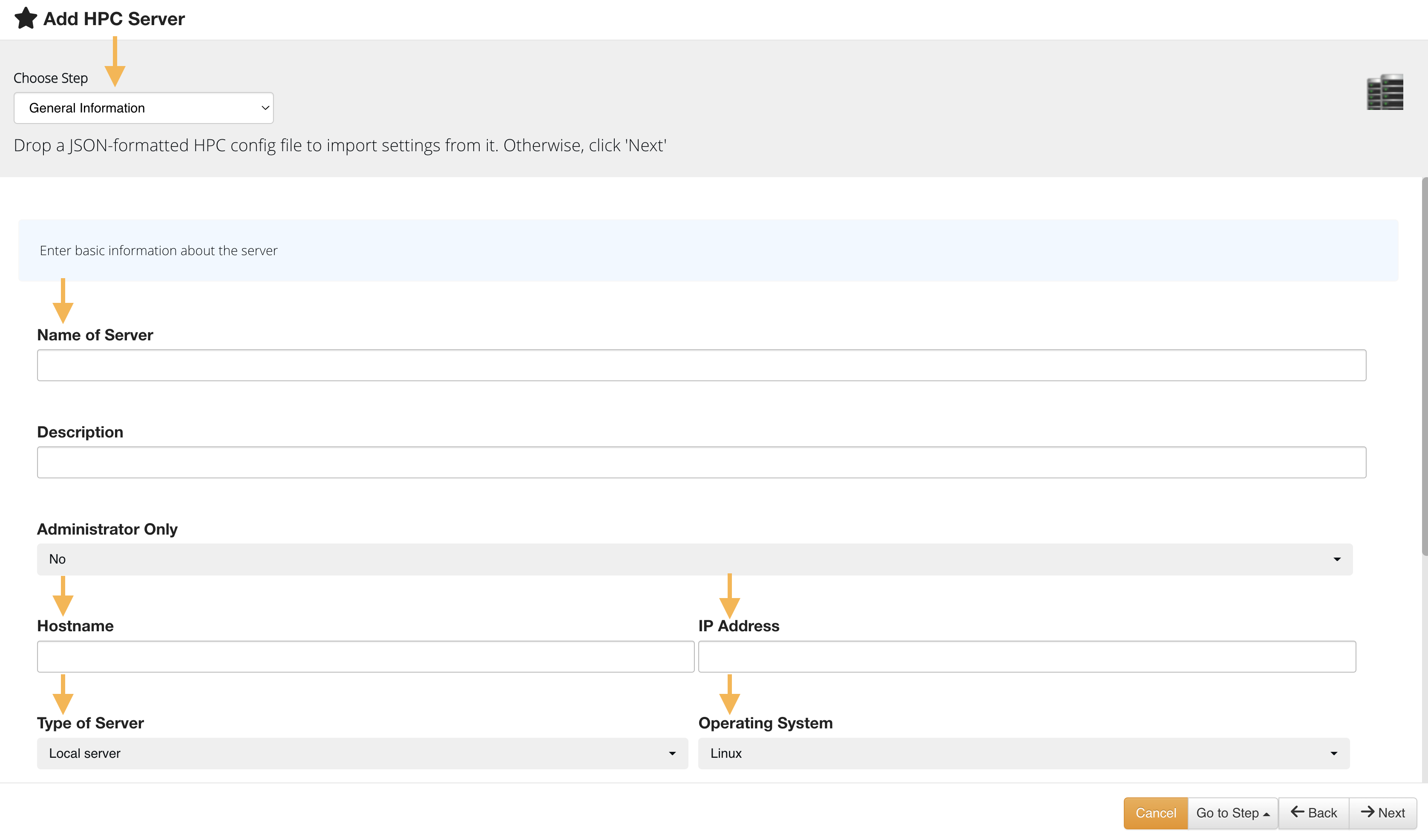
Figure 13: General Information
Scroll to see more configuration options. Choose the connection type, scheduler and scheduler path, as well as minimum, maximum and default core usage.
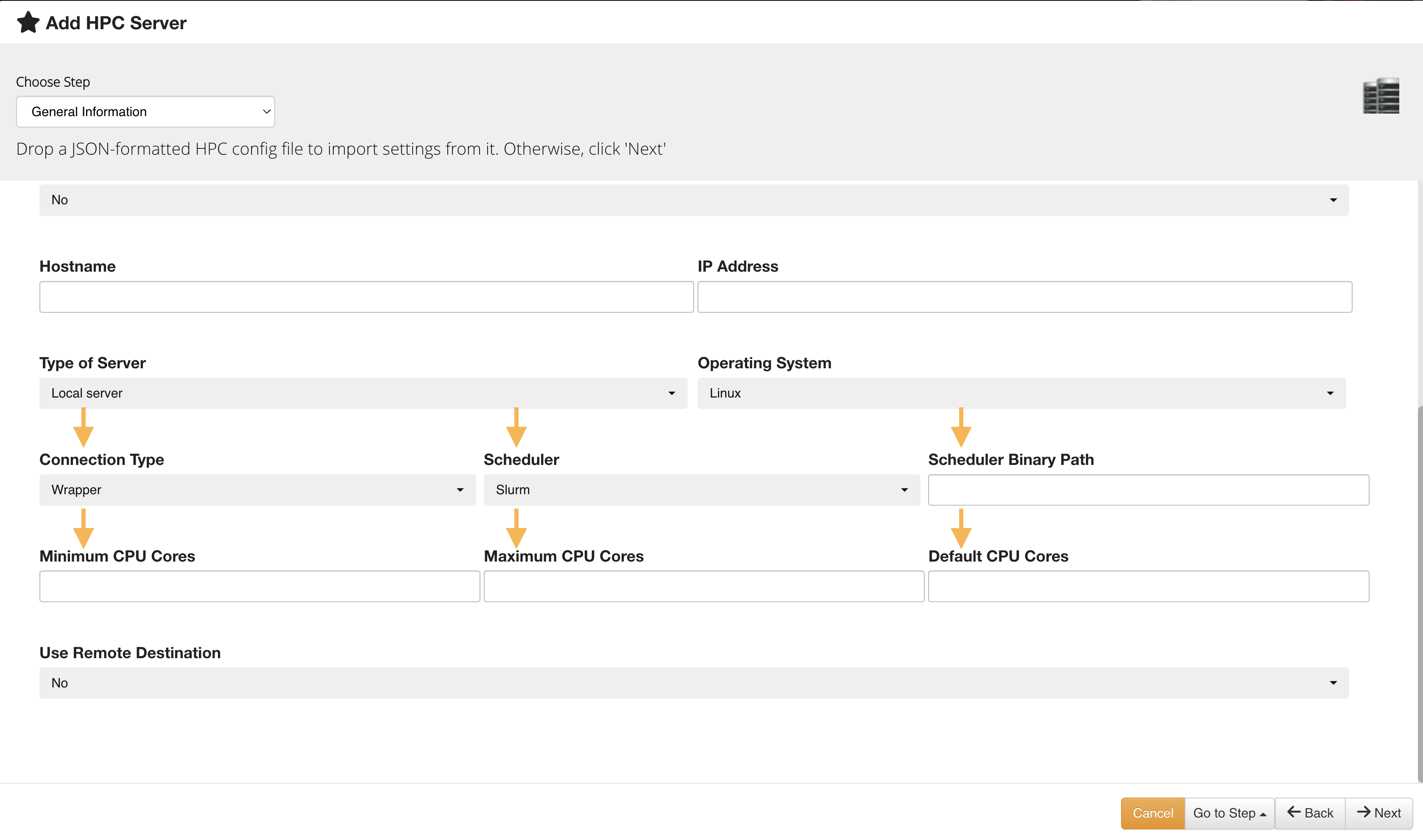
Figure 14: More General Information
For the scheduler, choose from multiple scheduler types and connect any scheduler via the location (binary path). This makes scheduler connection quick and easy.
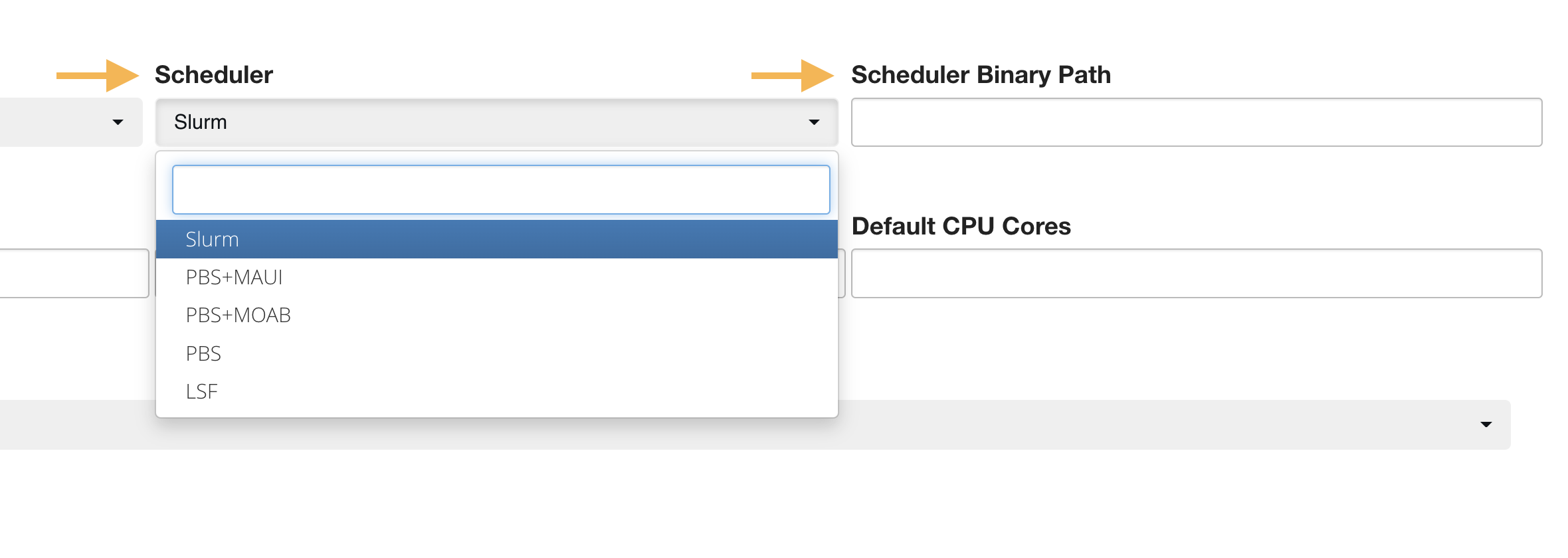
Figure 15: Connect Scheduler
Next, we’ll go back up to “Choose Step” and select “Add Queues”. Server Queues are cores divided into partitions, which then can be assigned to users, teams, etc. They allow us to control and organize our HPC resources.
Start typing out your queues and queue specifications in the provided table. More rows will appear as you fill the cells.
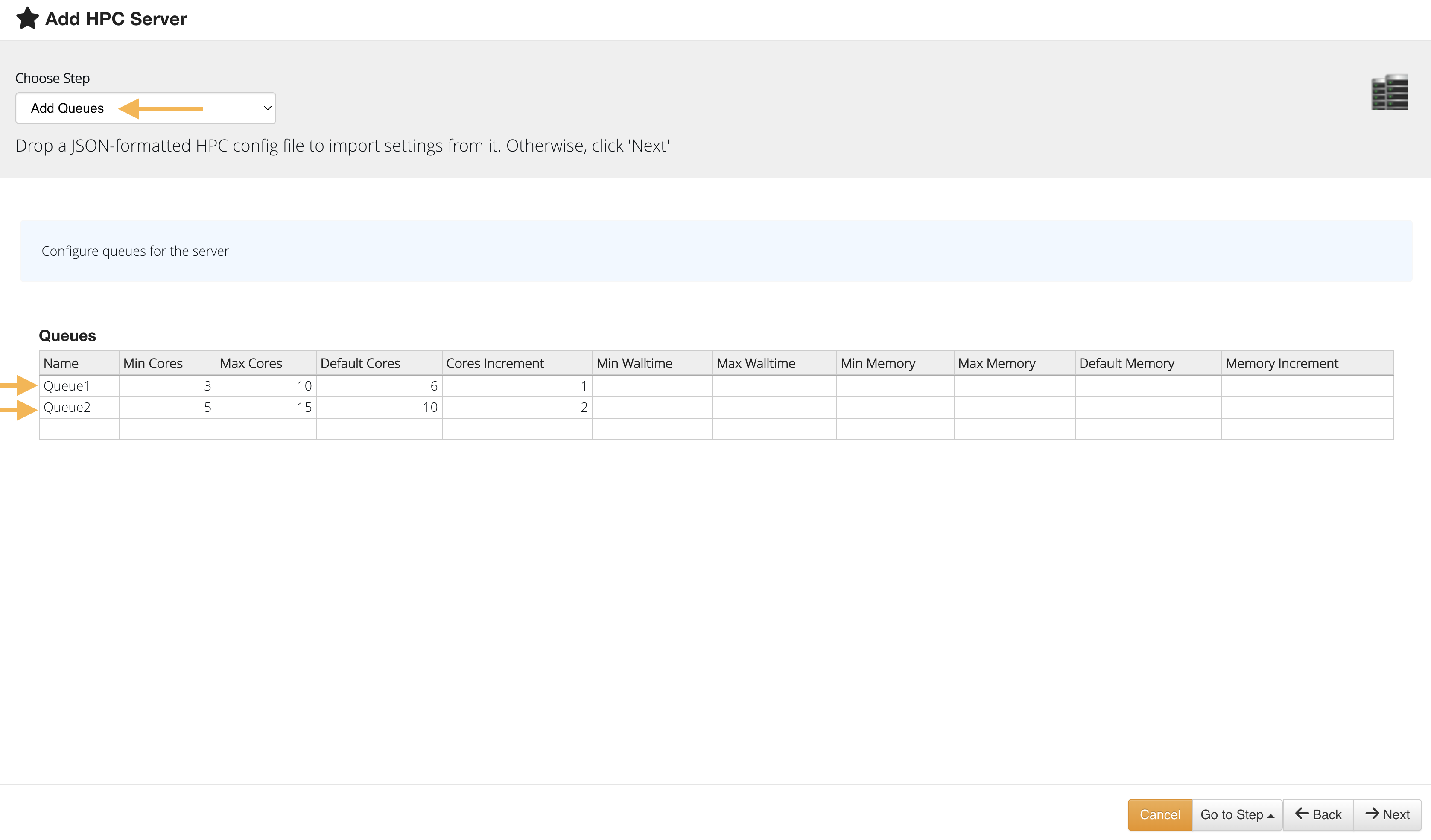
Figure 16: Add Queues
We’ll add solvers next. Choose this step at the top and click “+ Add” to create a new solver.
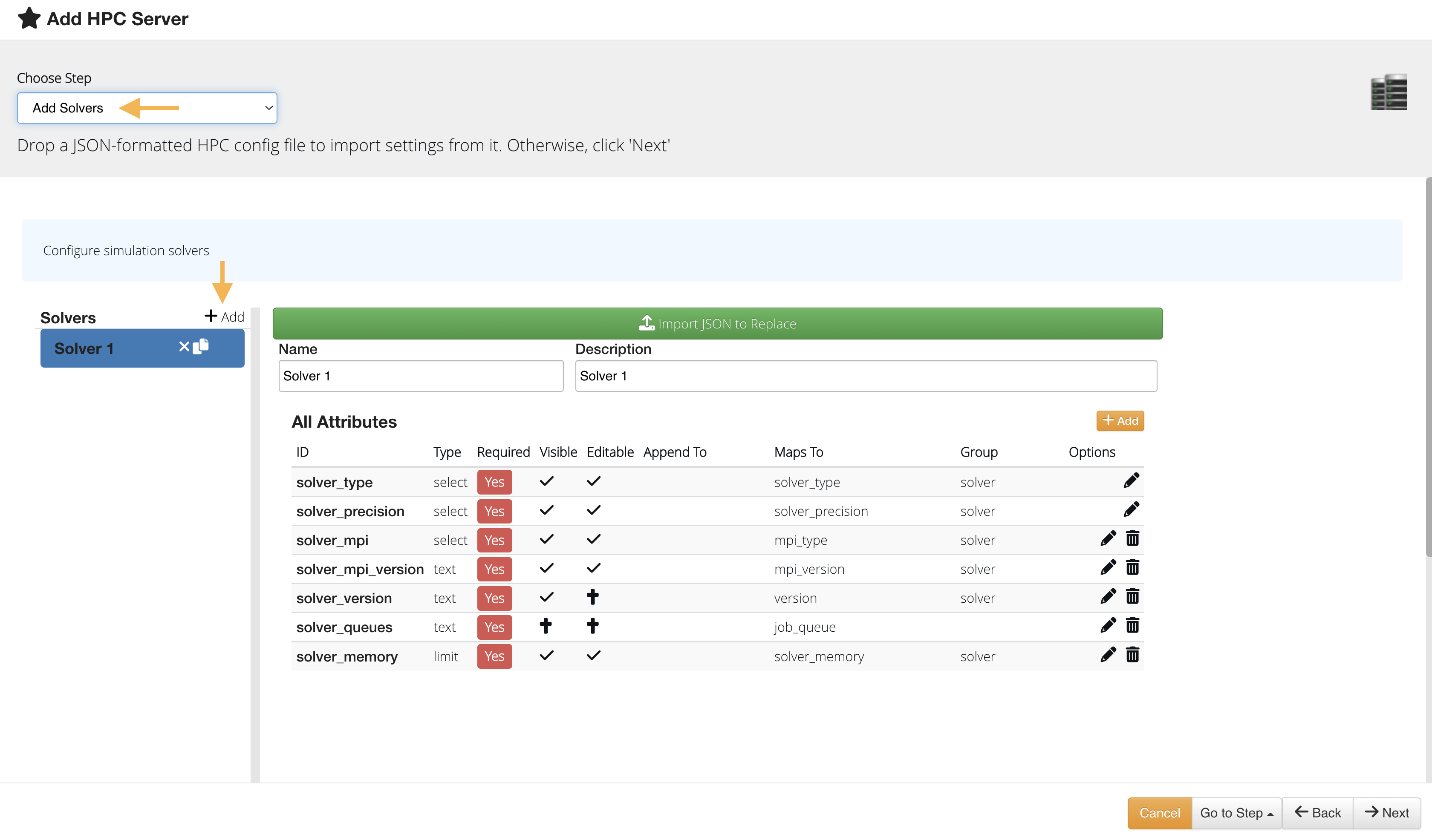
Figure 17: Add Solvers
Solvers allow us to create default configurations for job submissions to the HPC. We are free to add, edit and define attributes for the solvers, so we can have an unlimited number of applications. Click the + add icon to create a new solver attribute or any of the pencil icons to edit existing attributes.
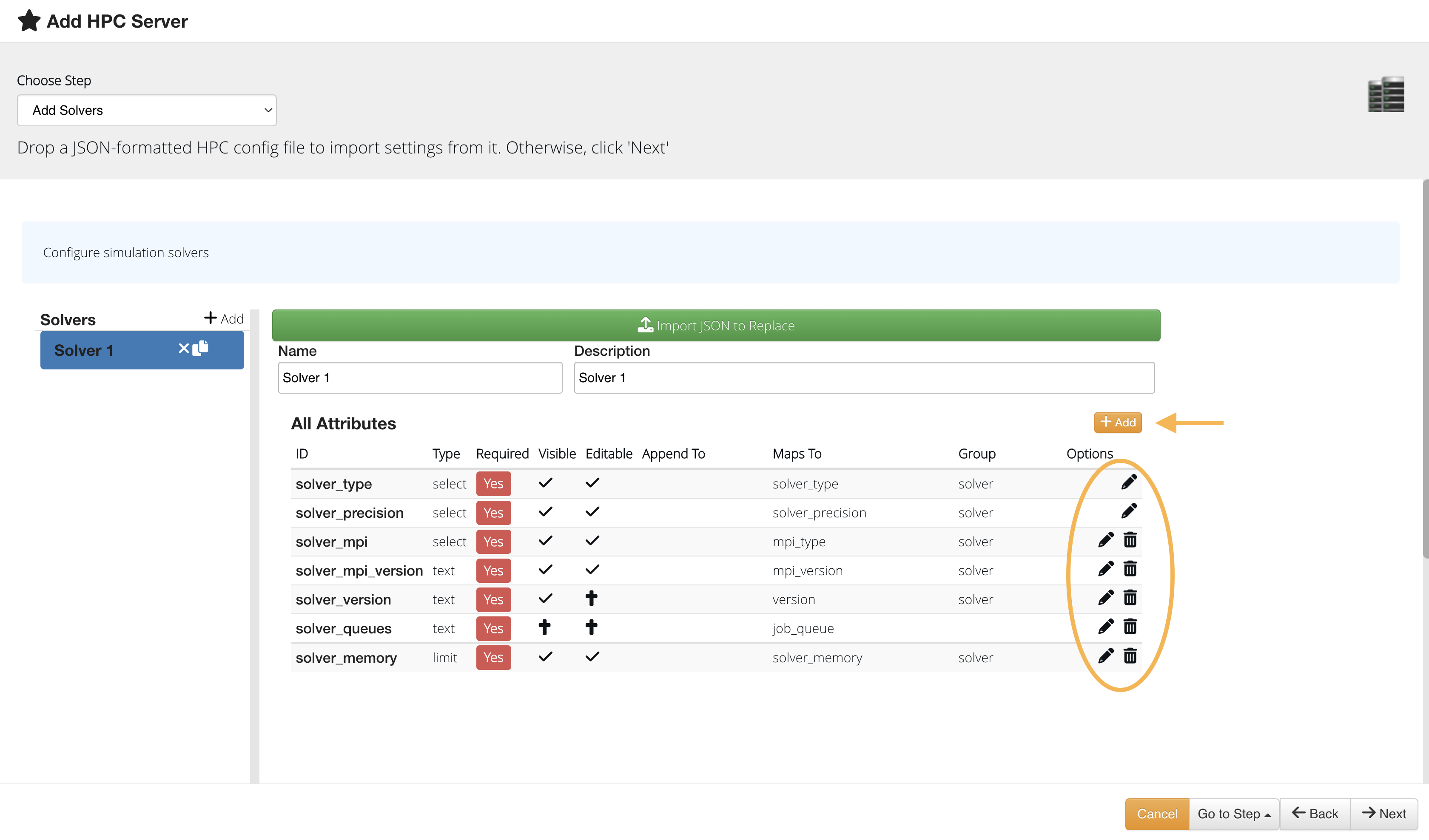
Figure 18: Add or Edit Solver Attributes
For example, we can edit the solver queues and associate particular partitions to the solver.
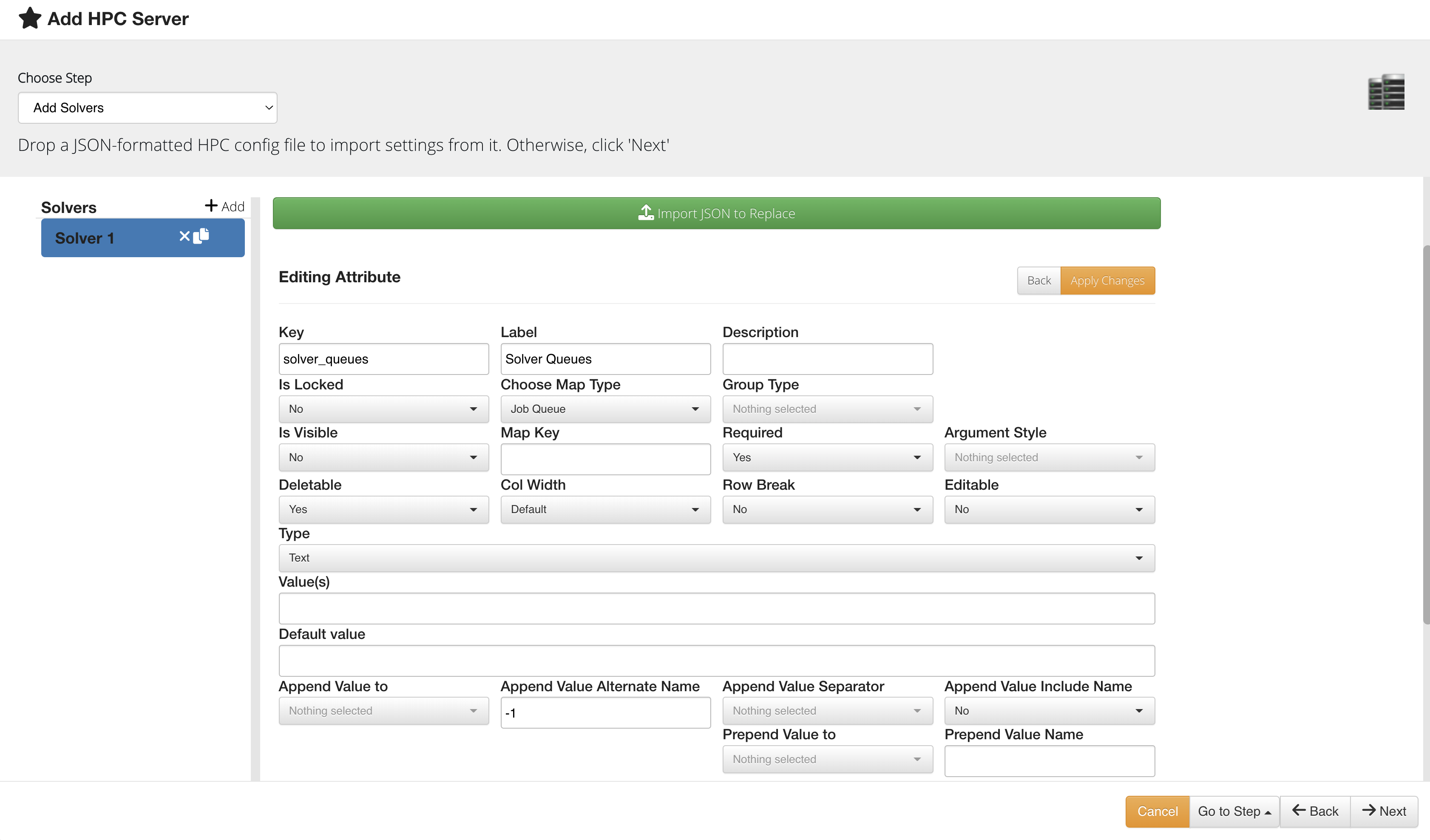
Figure 19: Edit Solver Queues
Edit HPC Server¶
Click on ”Edit” next to a server thumbnail to update its settings.
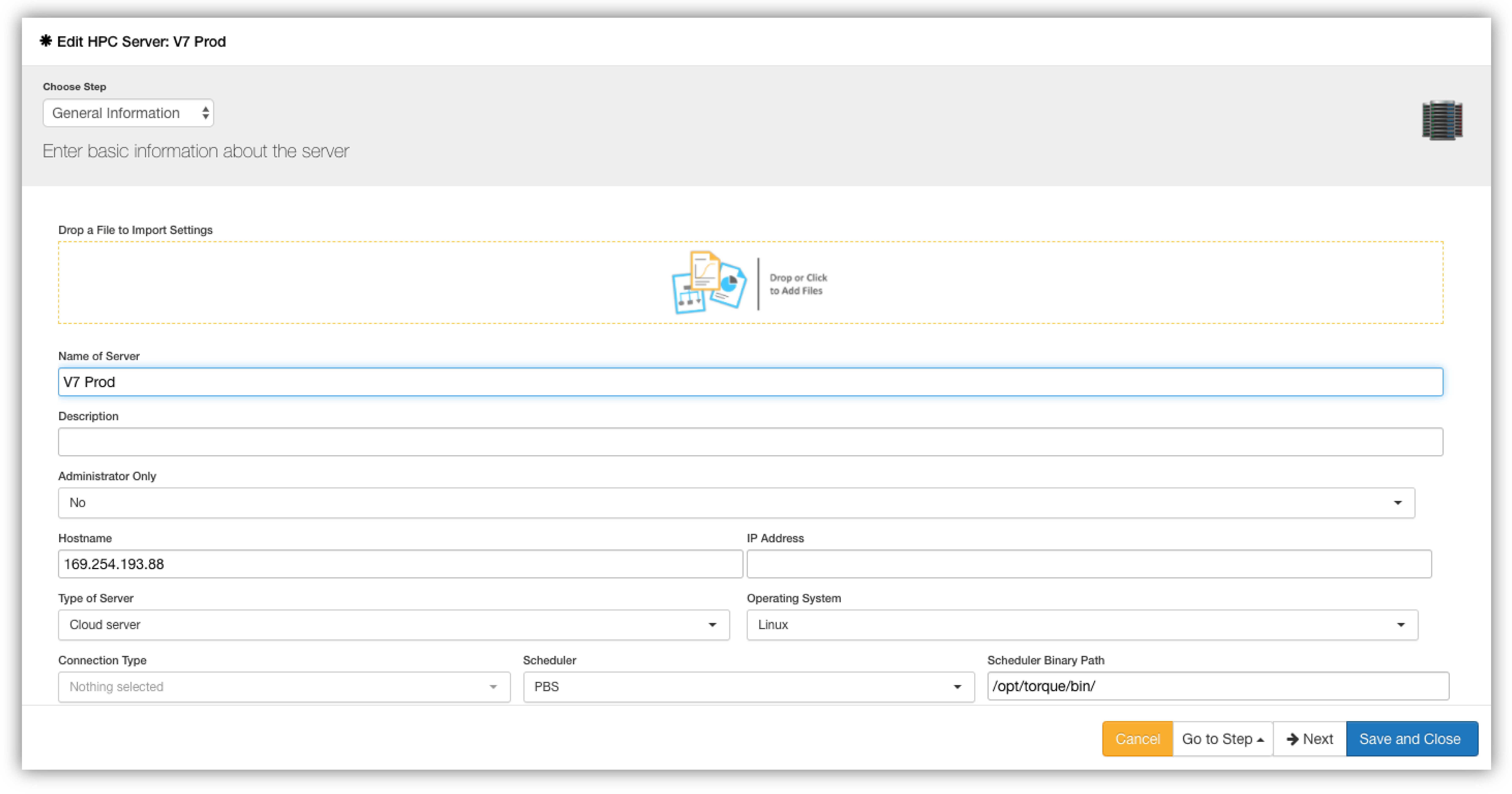
Figure 20: Edit a HPC Server
The default solver in HPCSERVER now has all necessary attributes. All the newly created servers will have these attributes by default.
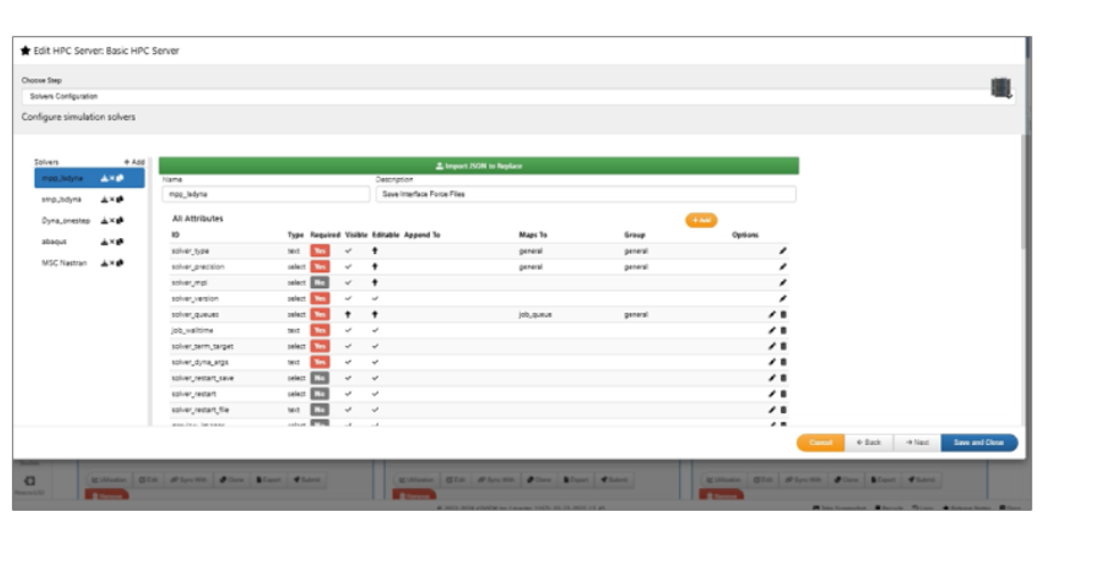
Attributes
Column width of an attribute can be edited and saved to HPCserver in server settings option.
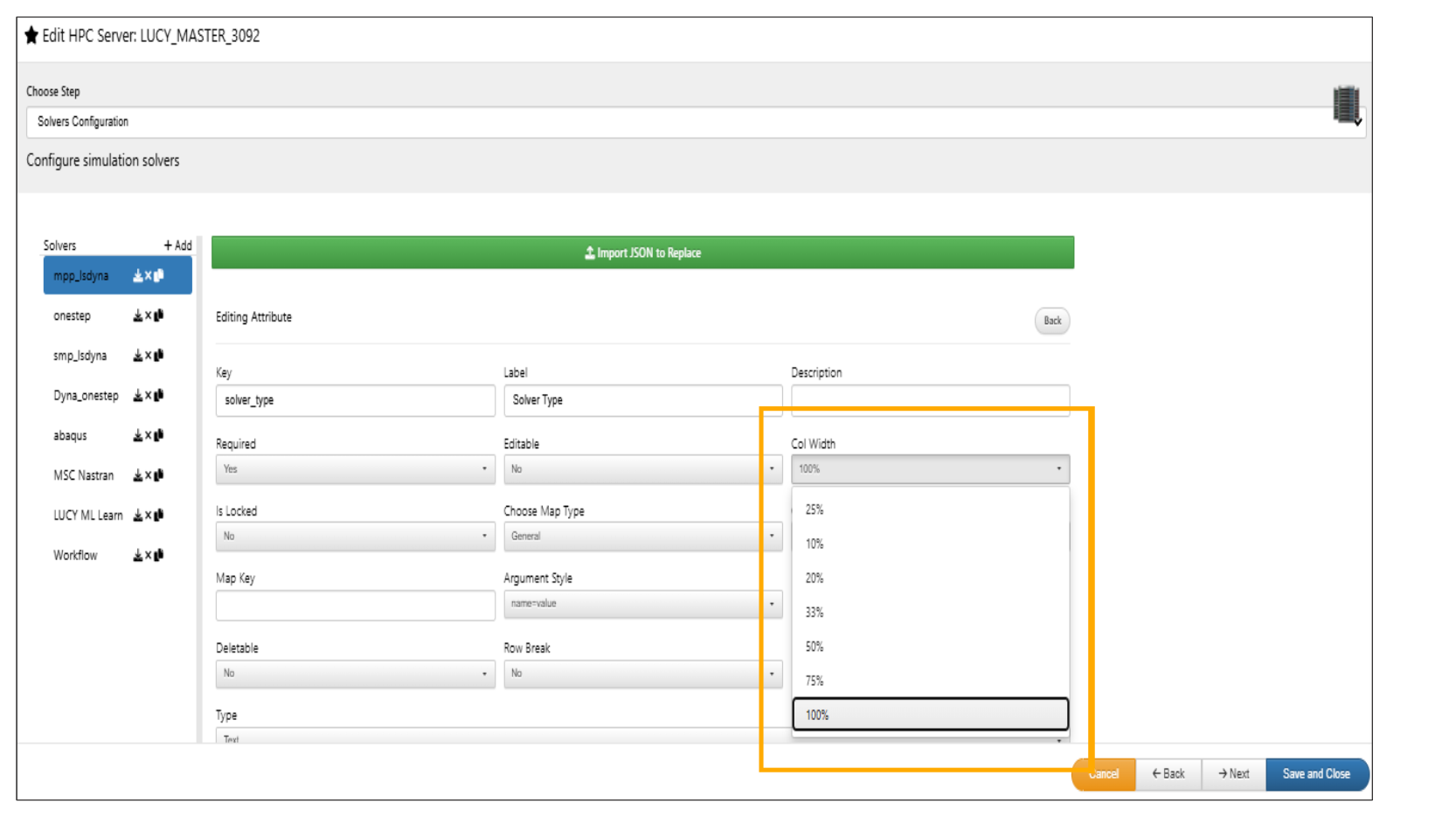
Column width of an attribute
Interconnects and Translators¶
We have new options to add Interconnects and Translators to HPC servers while editing them.
- Interconnects - We can add name , description , binary and commands to create intreconnects.
- Translators - We can add name , decription , binary and commands to create Translators.

Interconnects
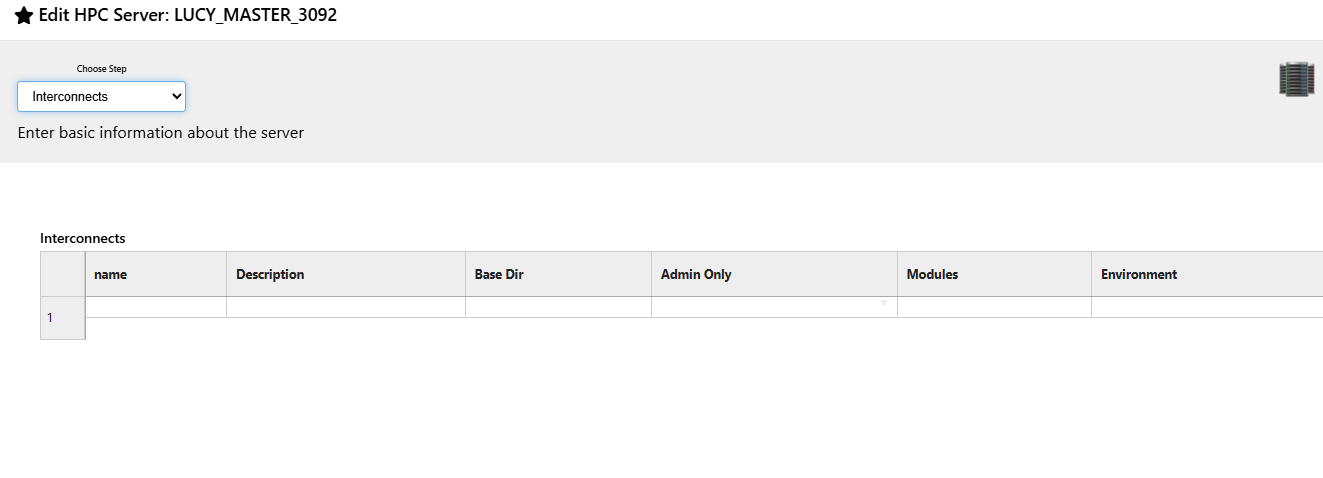
Interconnects
HPC Utilization¶
You can view HPC usage by clicking on “Utilization” next to a HPC thumbnail. This window will show you visualizations and information such as core usage, running jobs and peak utilization.
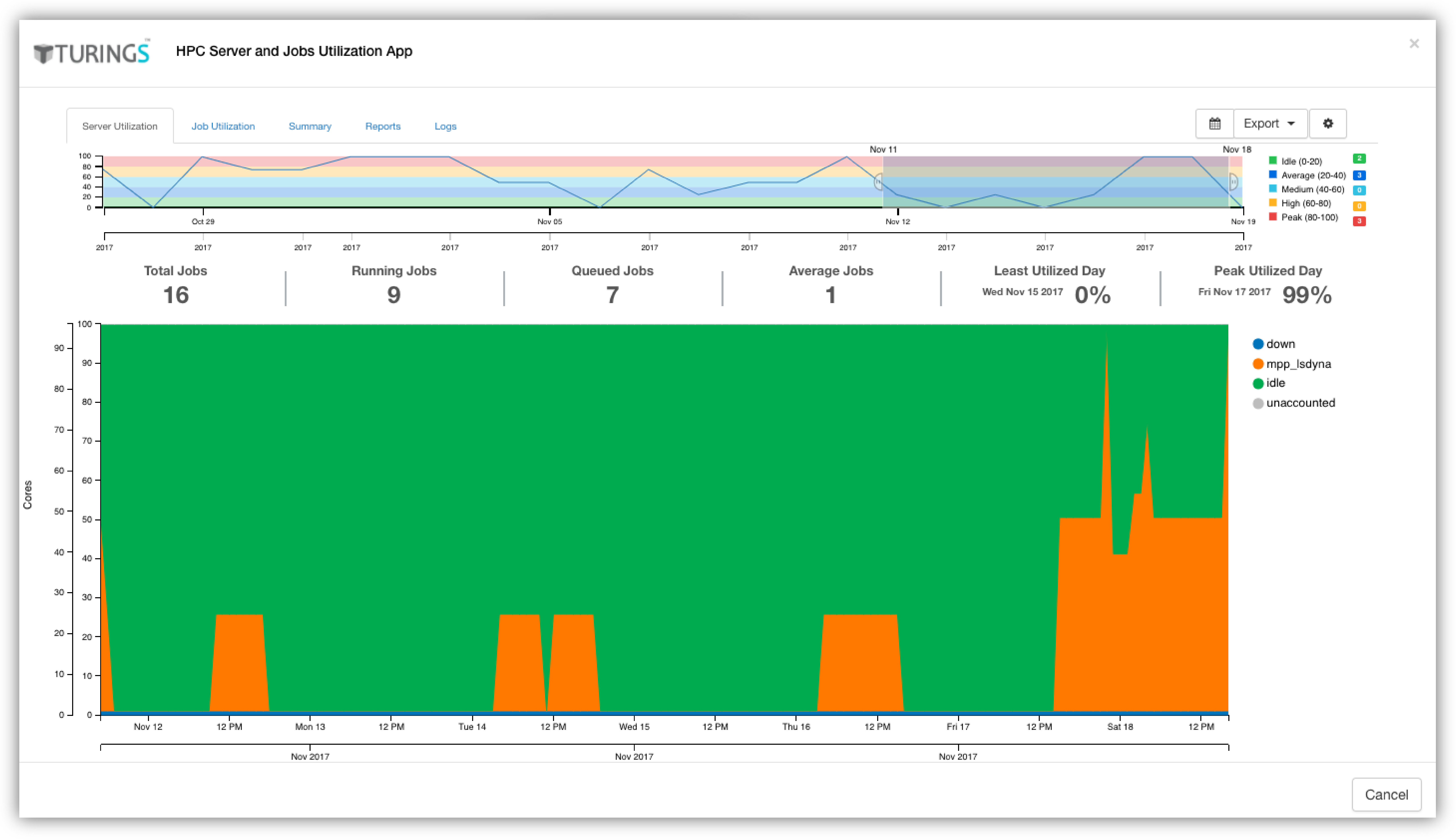
Figure 21: HPC Utilization Window
Below video show us how to manage HPC server or add a new HPC server to the page.
HPC server settings¶
Here are some of the settings where solver attributes are used to enhnace the process of Job submission.
- Options to use to detect hung simulation and to terminate them
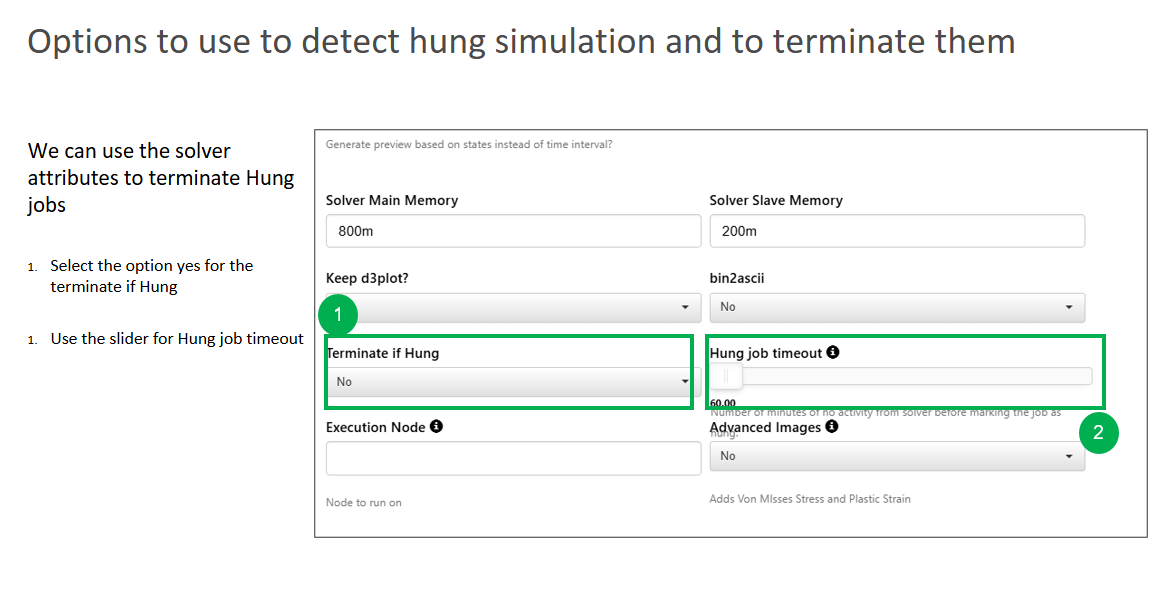
detect hung simulation and to terminate them
- Options to terminate jobs with errors that have hung
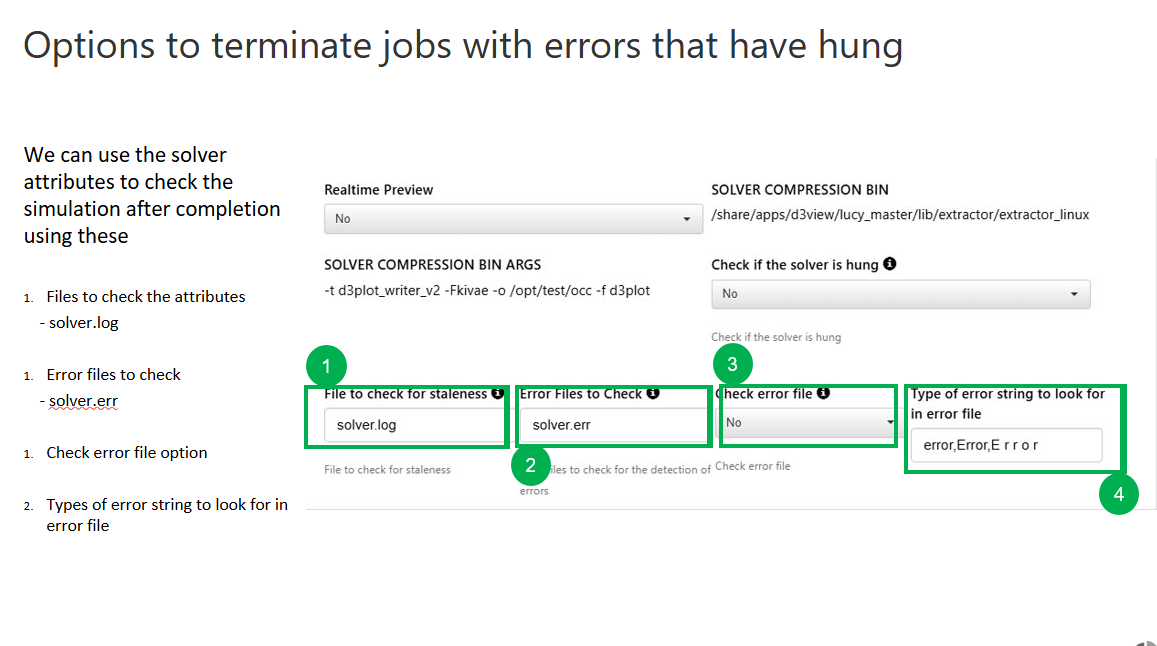
detect hung simulation and to terminate them
- Options to restart the Simulation
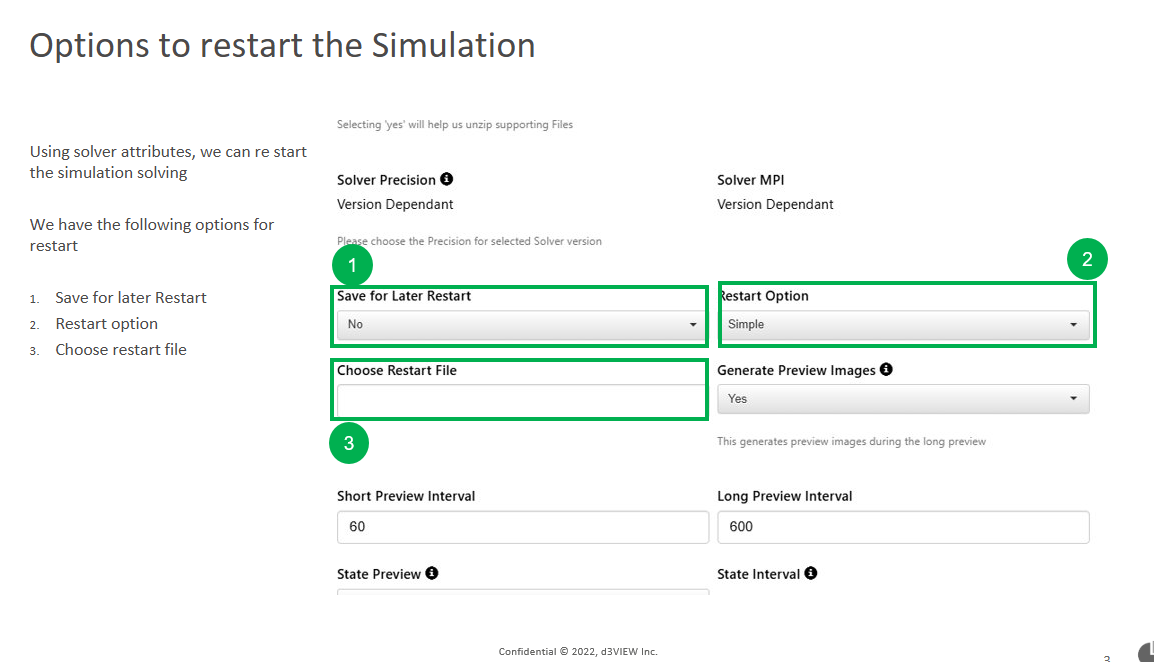
terminate jobs with errors that have hung
- Options to post-process simulation after the simulation completes
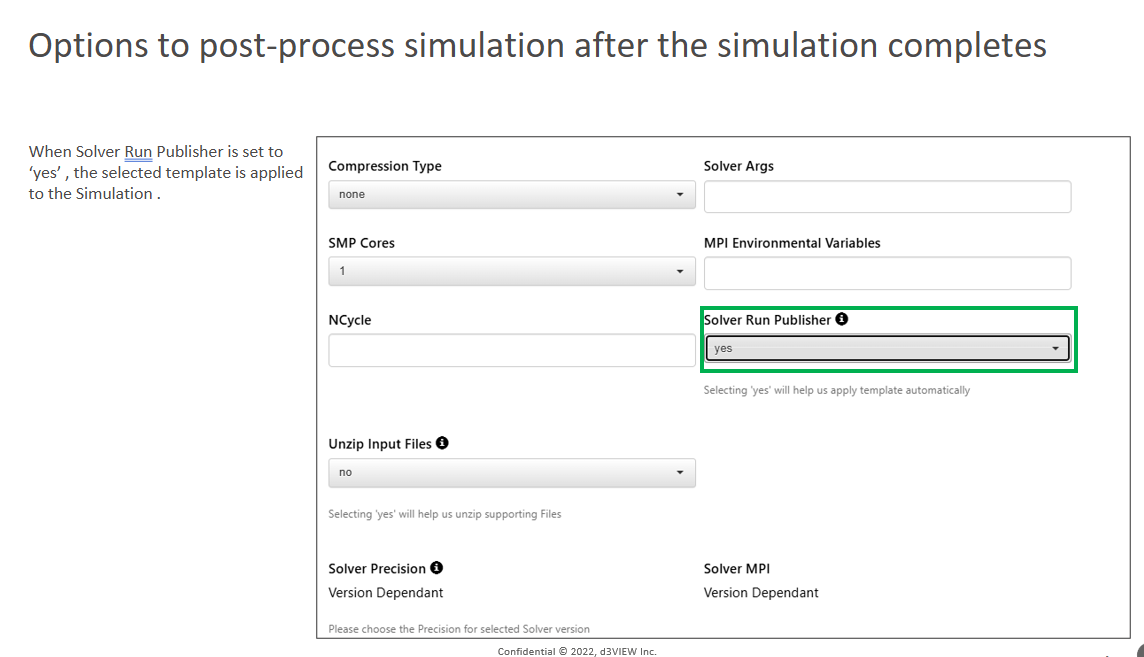
Post-process simulation
- Solver Version
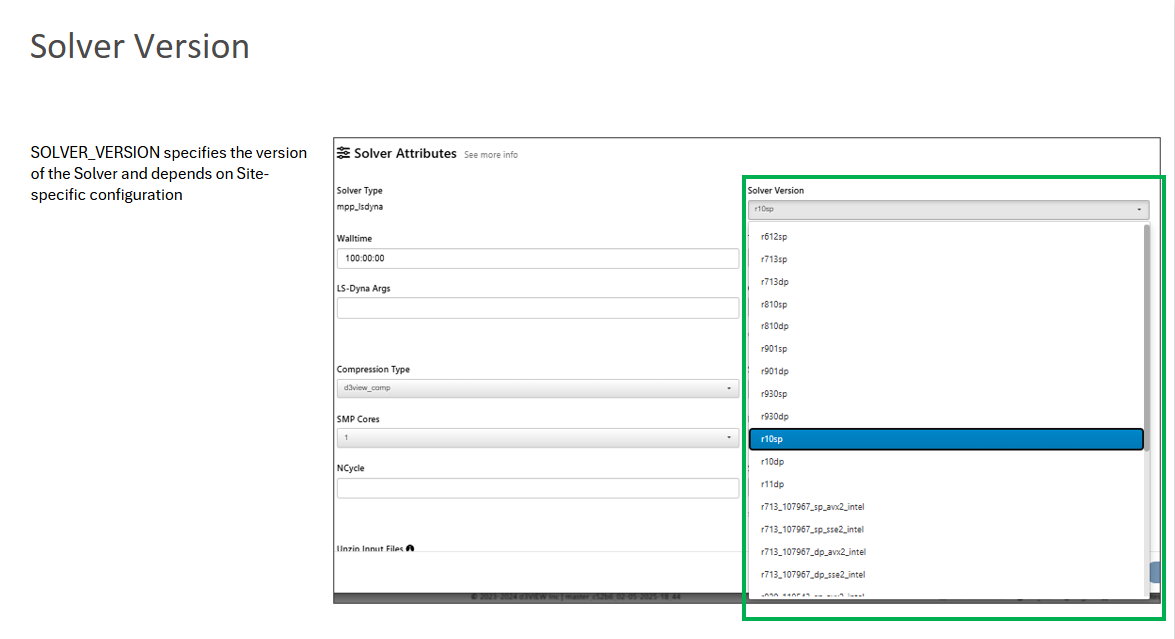
Solver Version
- Selection of Compression type for LS-DYNA Result files
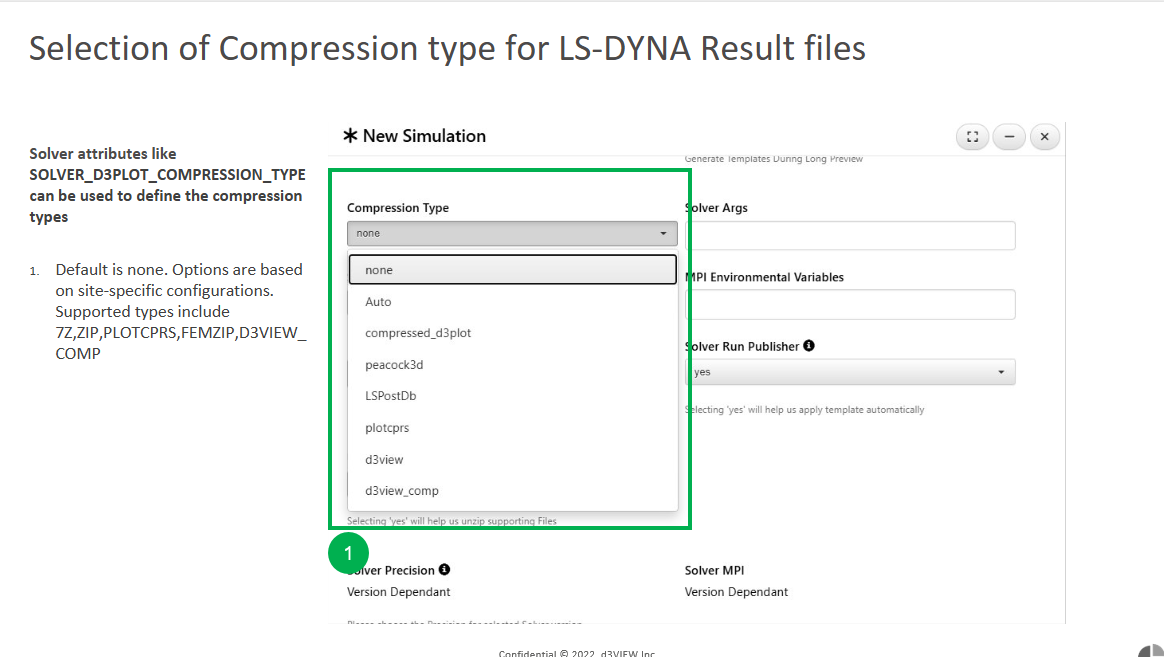
Compression Type
- Solver Precision and Solver MPI
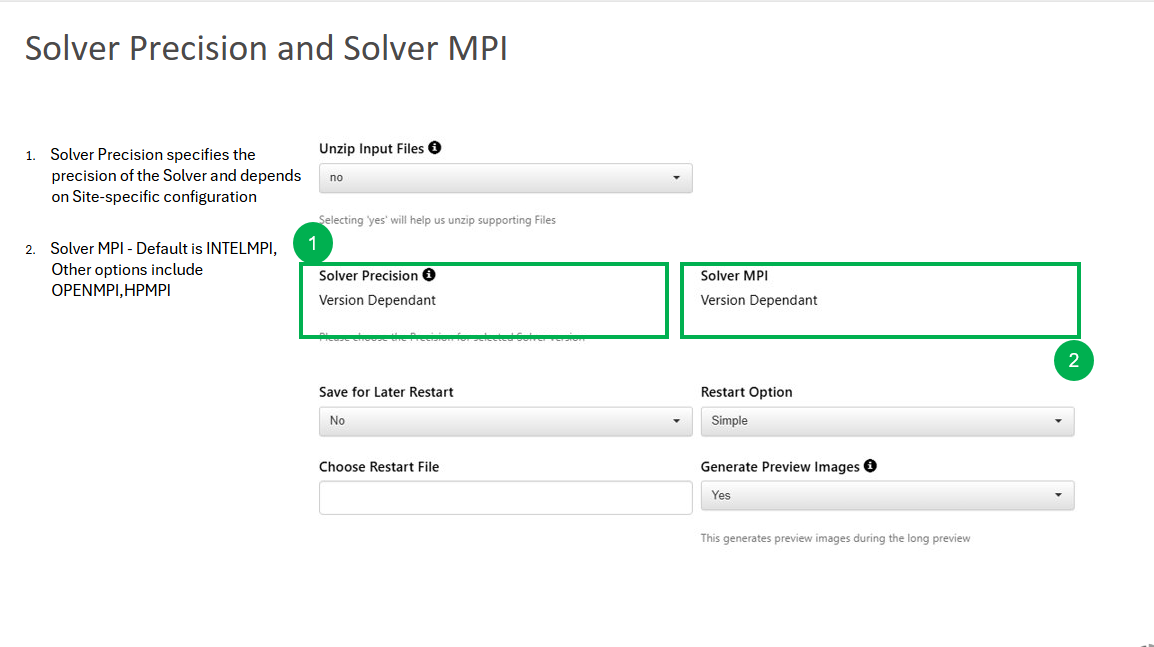
Solver Precision and Solver MPI
- Options to provide Preview intervals and state intervals
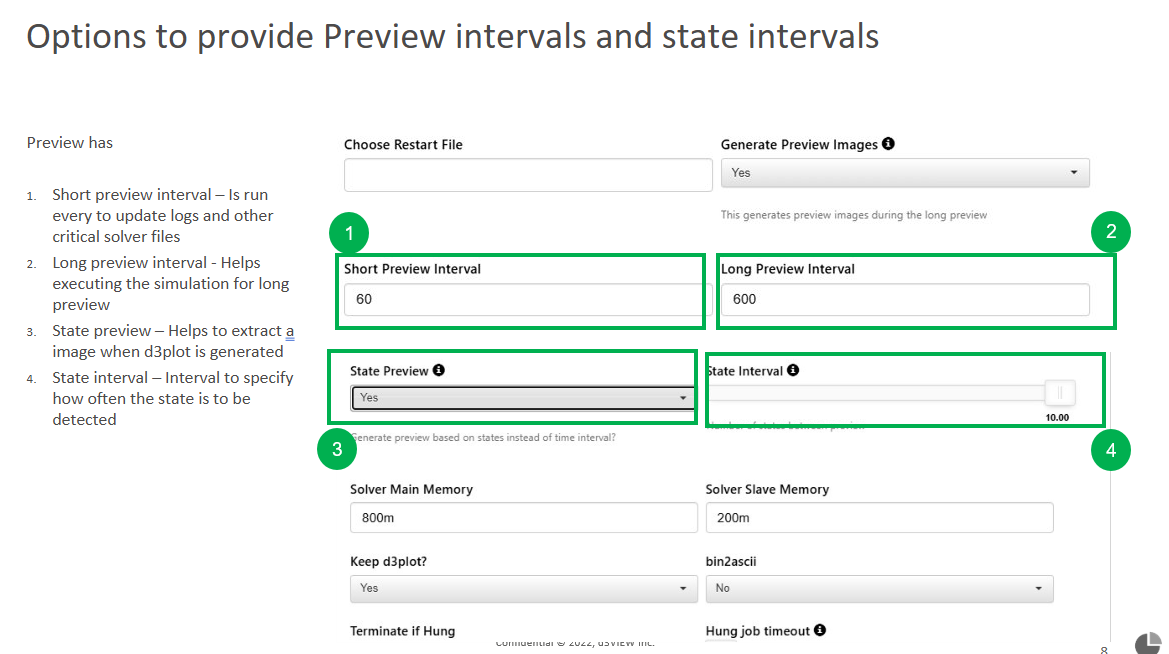
Preview intervals and state intervals
- Memory Options
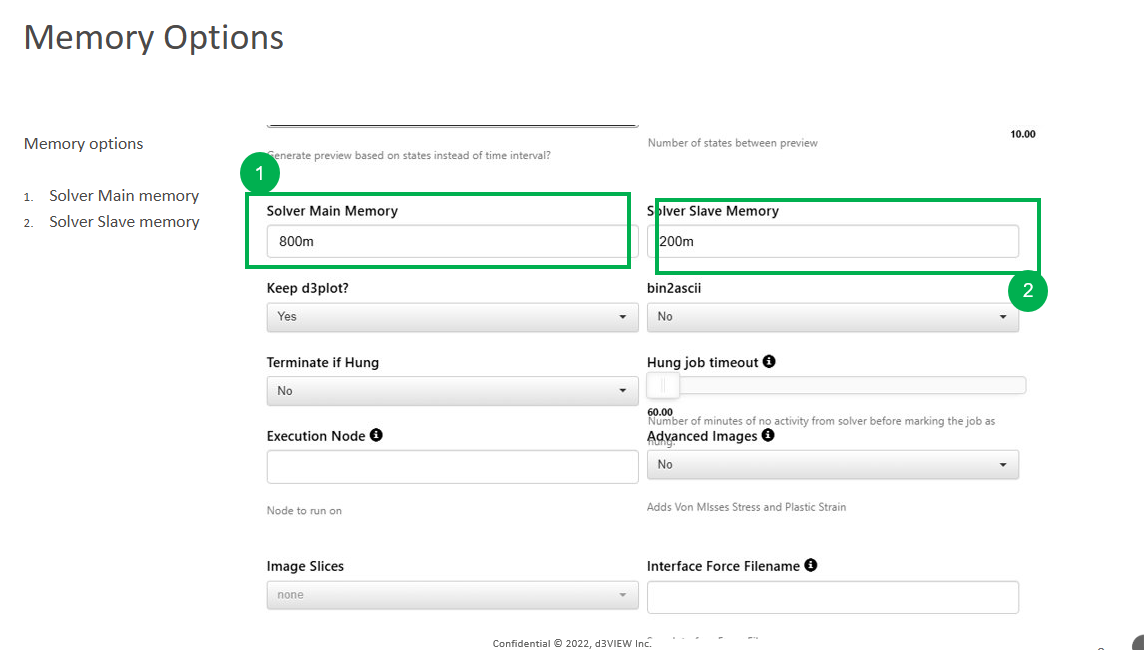
Memory Options
- Binary path to use for compression
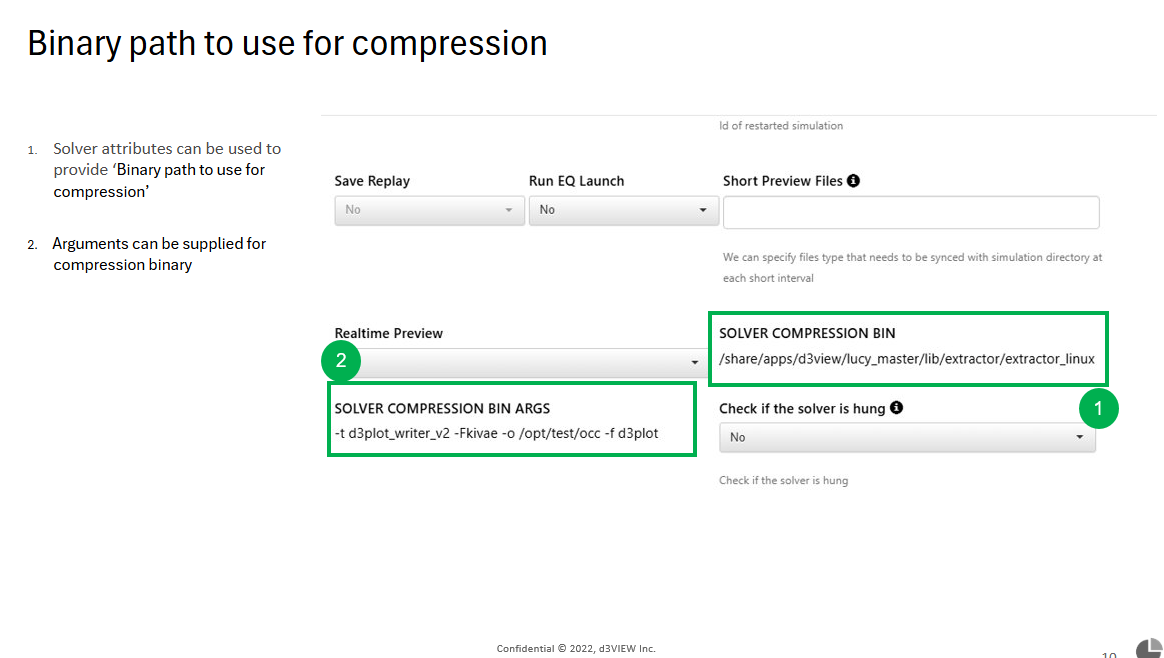
Binary Path
- New variables QOS and NICE
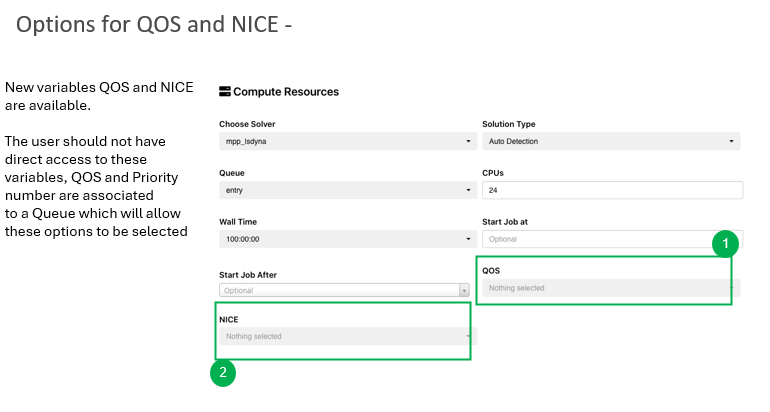
QOS and NICE
HPC Disk/Job/Node status¶
HPC Servers in job submission will now show disk status/Job status and Node status.
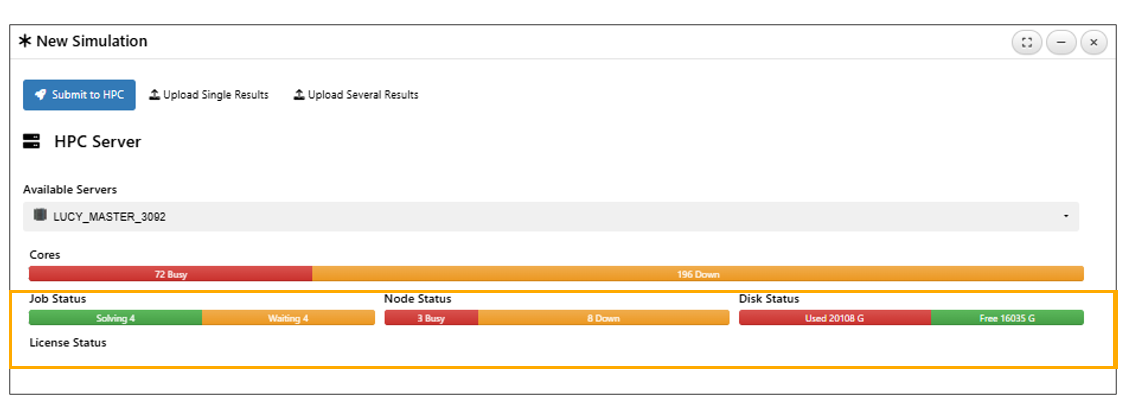
Disk,Job and Node
In Job Submision , we now see node information in the node status and job info in the job status when clicked in HPC servers.
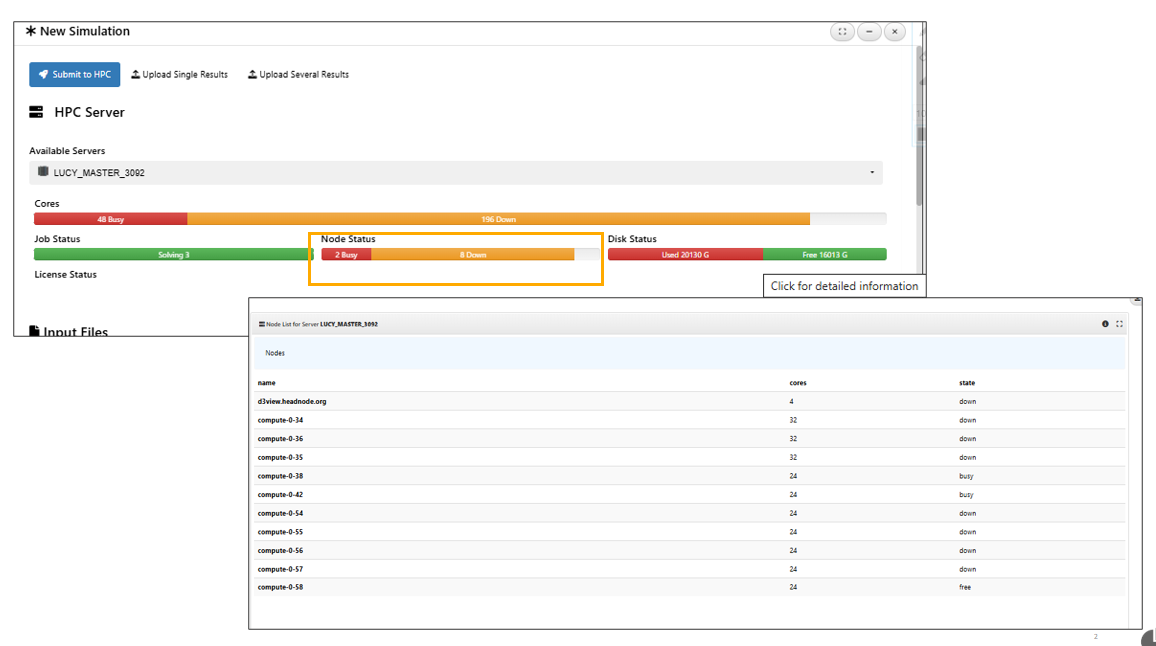
Node status
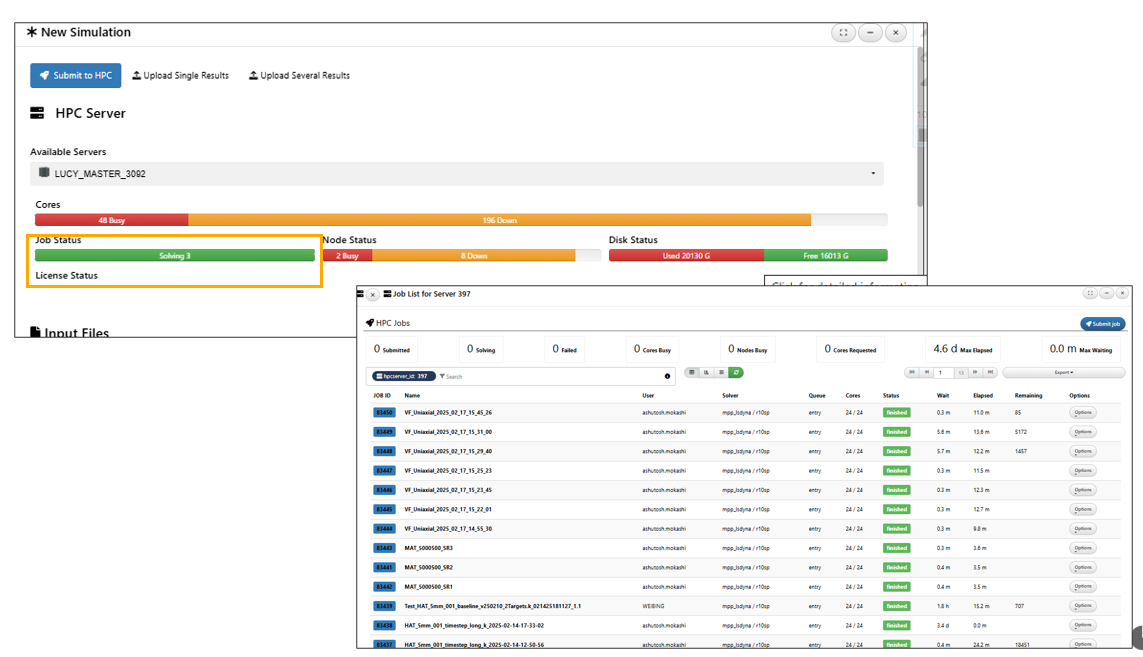
Job status
Clicking on Disk usage will show usage by users i HPCservers while submitting a job.
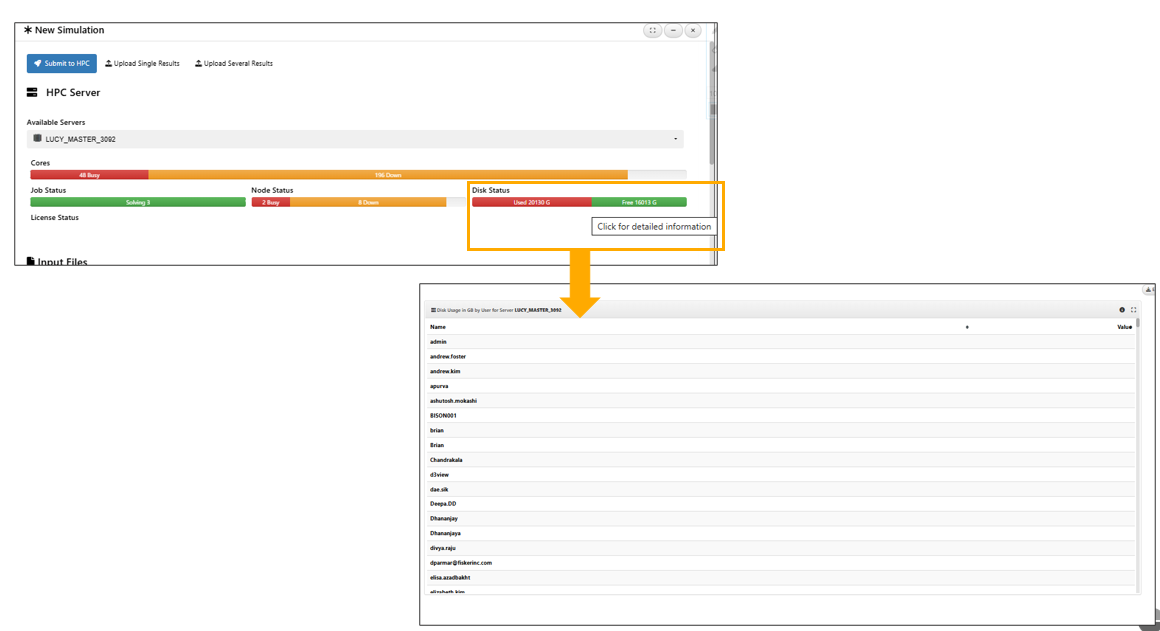
Disk usage
HPCSERVER → Utilization view during job submission now includes the queue list.
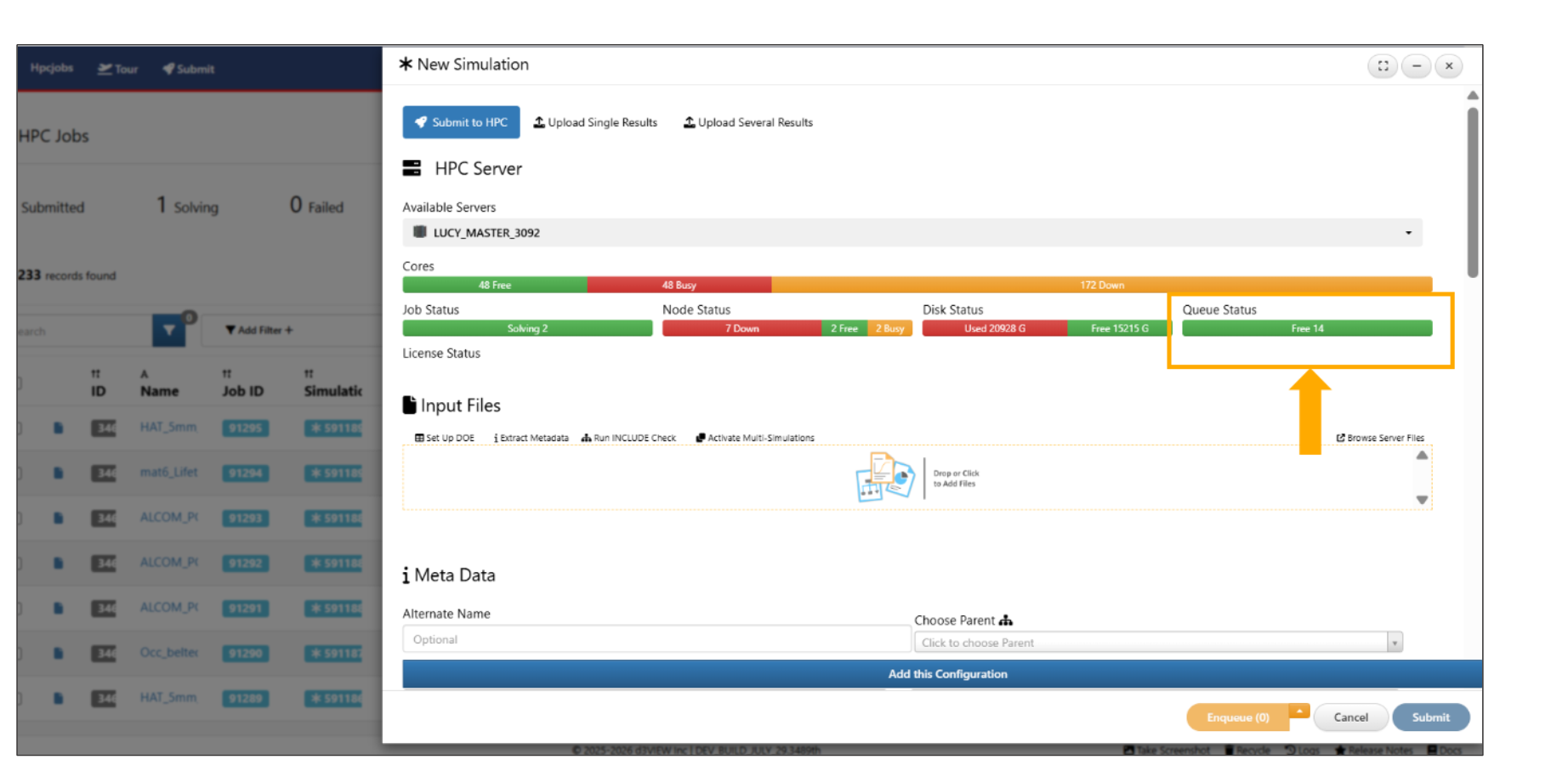
HPC server queues
3.5. All Settings¶
Click on the All Settings option in the Administrative Menu to get started.
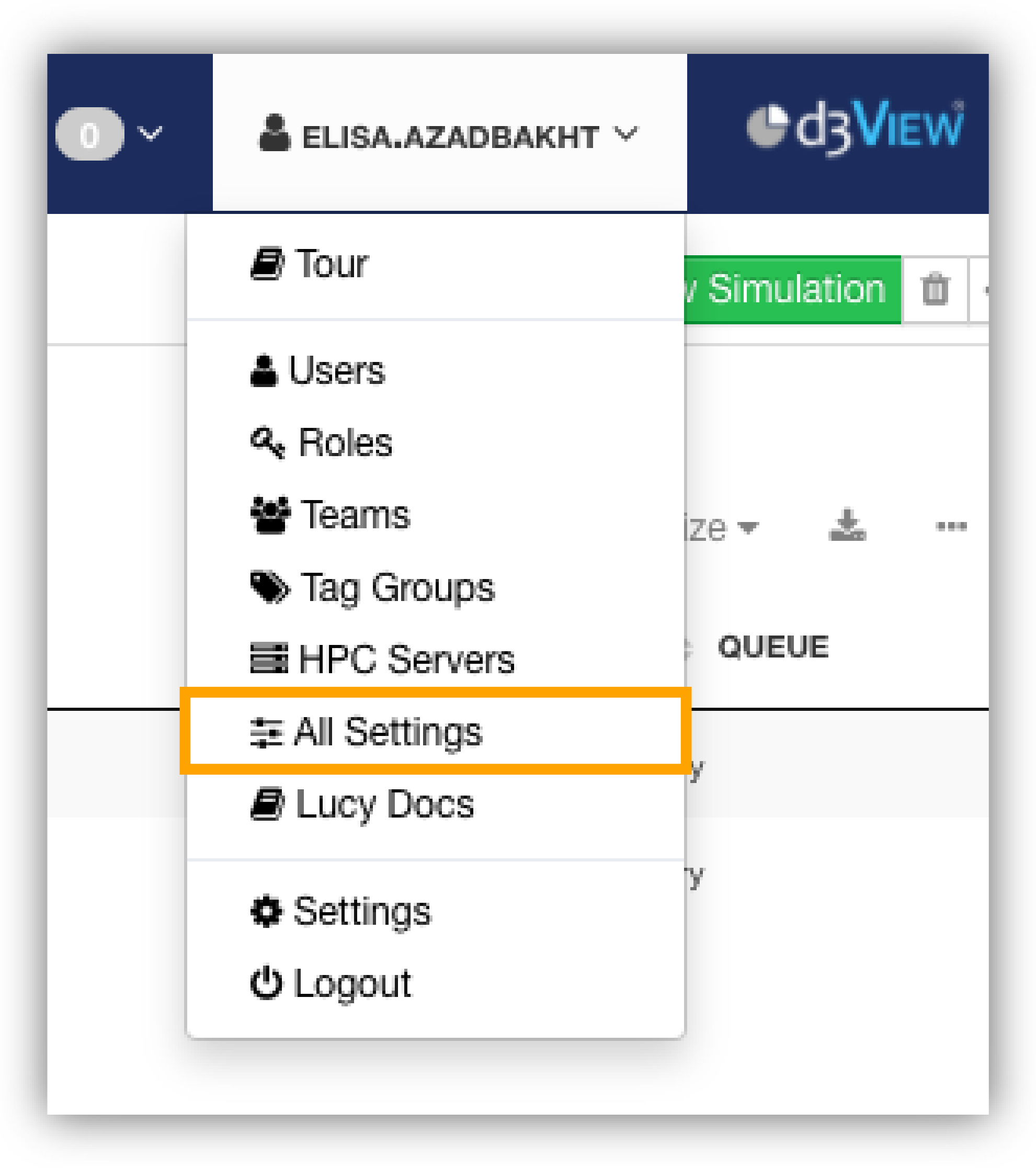
Figure 22: All Settings Option
This takes you to a page which presents an overview of everything. Click on other links in the side panel to explore and update settings.
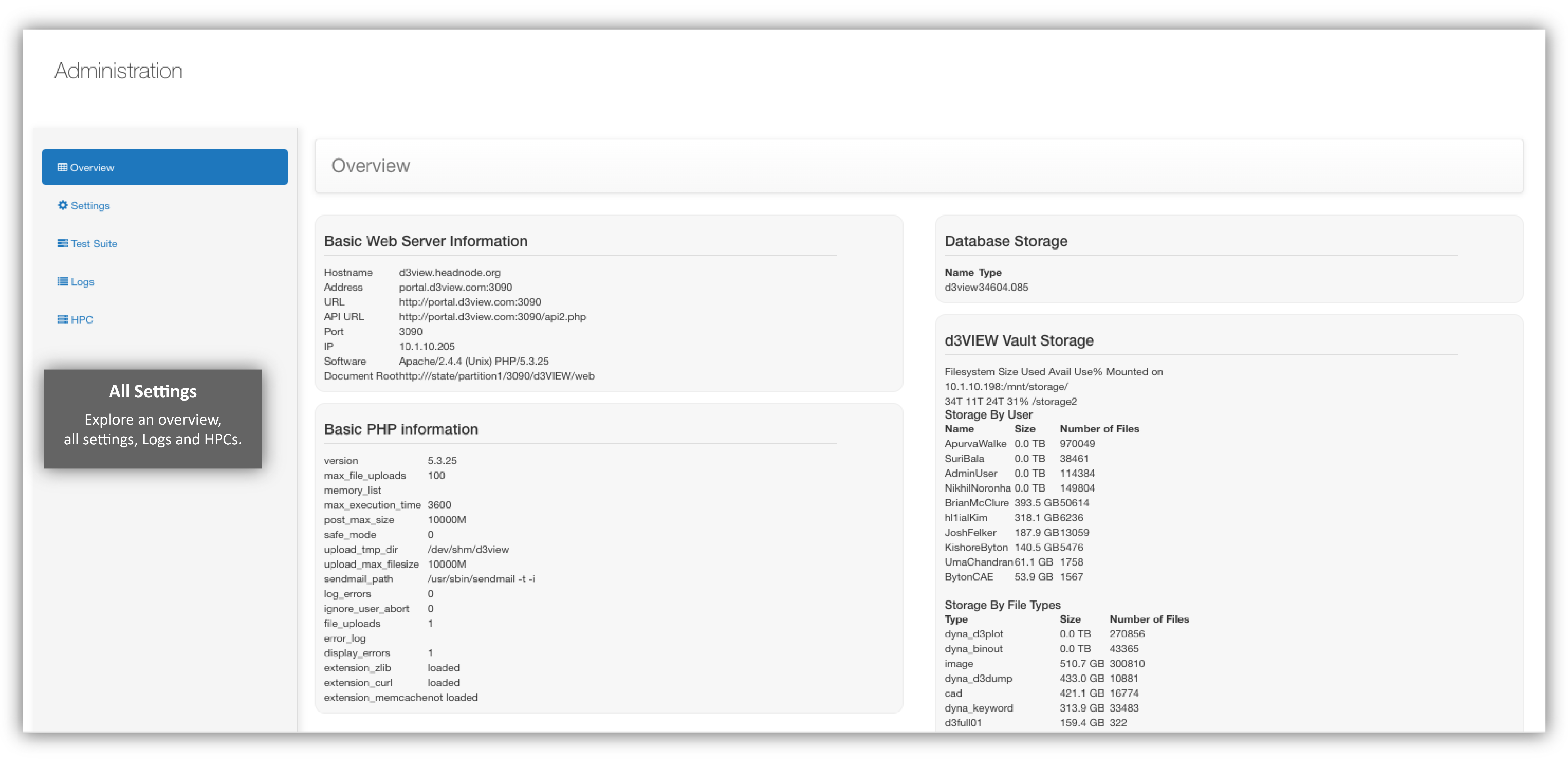
Figure 23: All Settings Overview
Where Am I?

Post Processors¶
Under the settings section on the side panel, you can update an array of settings. The buttons for these sections are located on top. Click on Post Processors to go to this section.
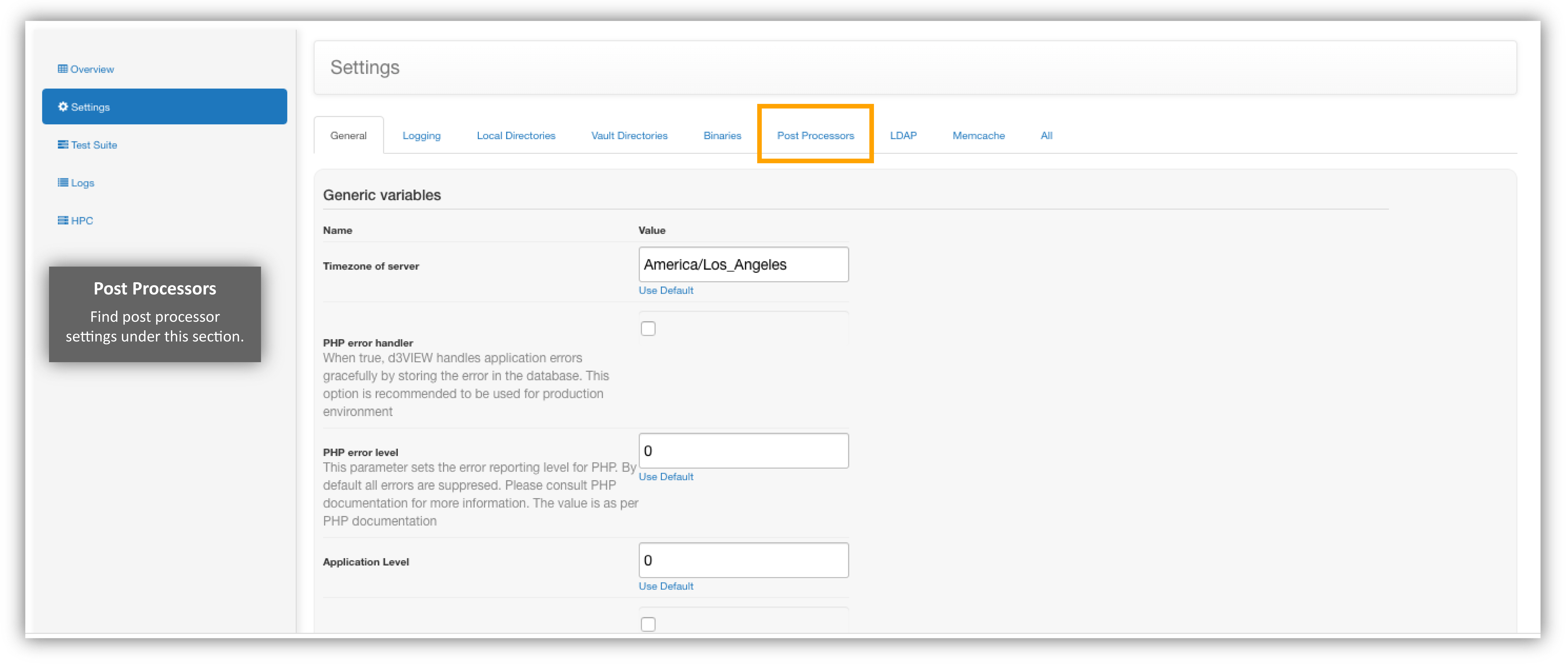
Figure 24: Click on Post Processors
Update these settings as you like.
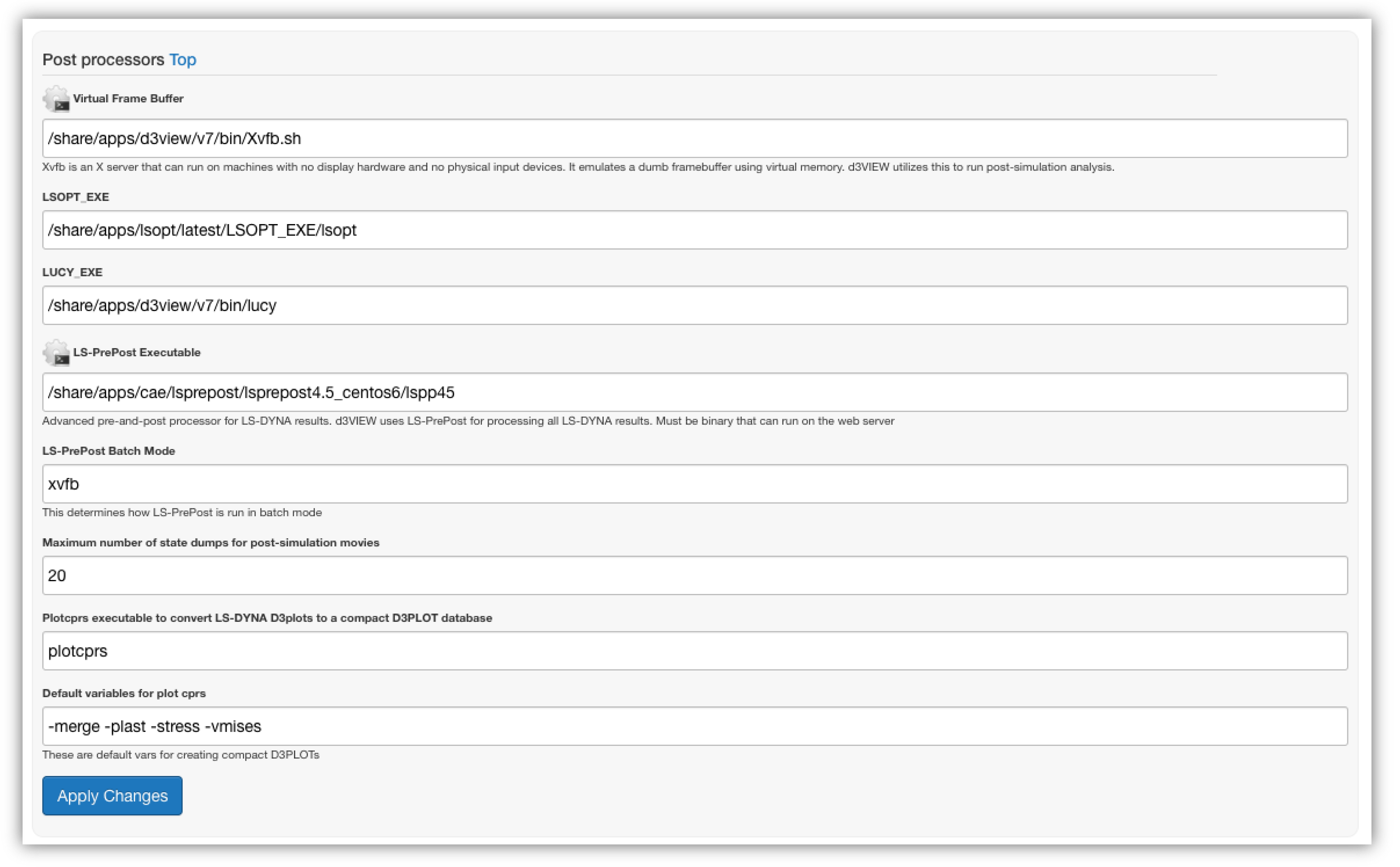
Figure 25: Post Processors Settings
LDAP Settings¶
Under the same side panel section, click on “LDAP” at the top right next to “Post Processors”.
Figure 26: Click on LDAP Settings
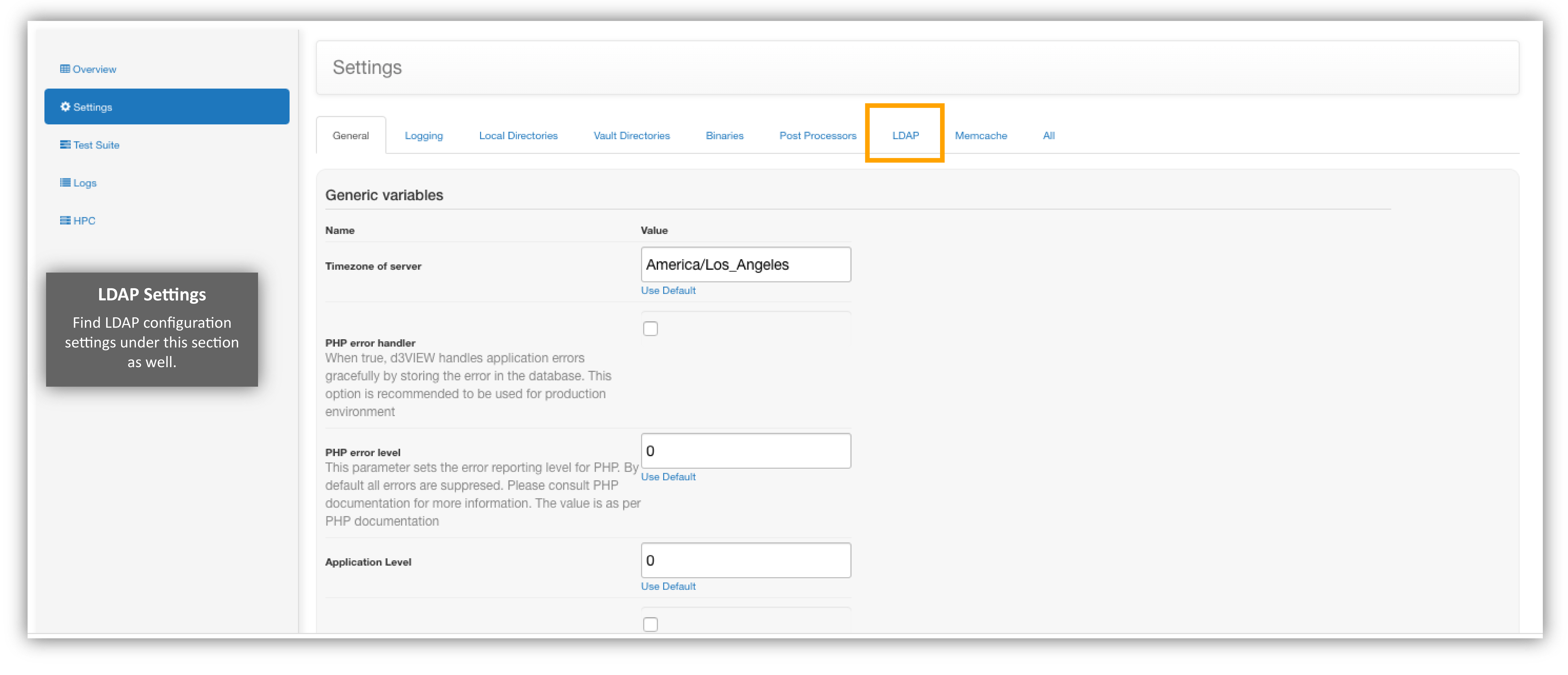
Here, you can edit you LDAP configuration.
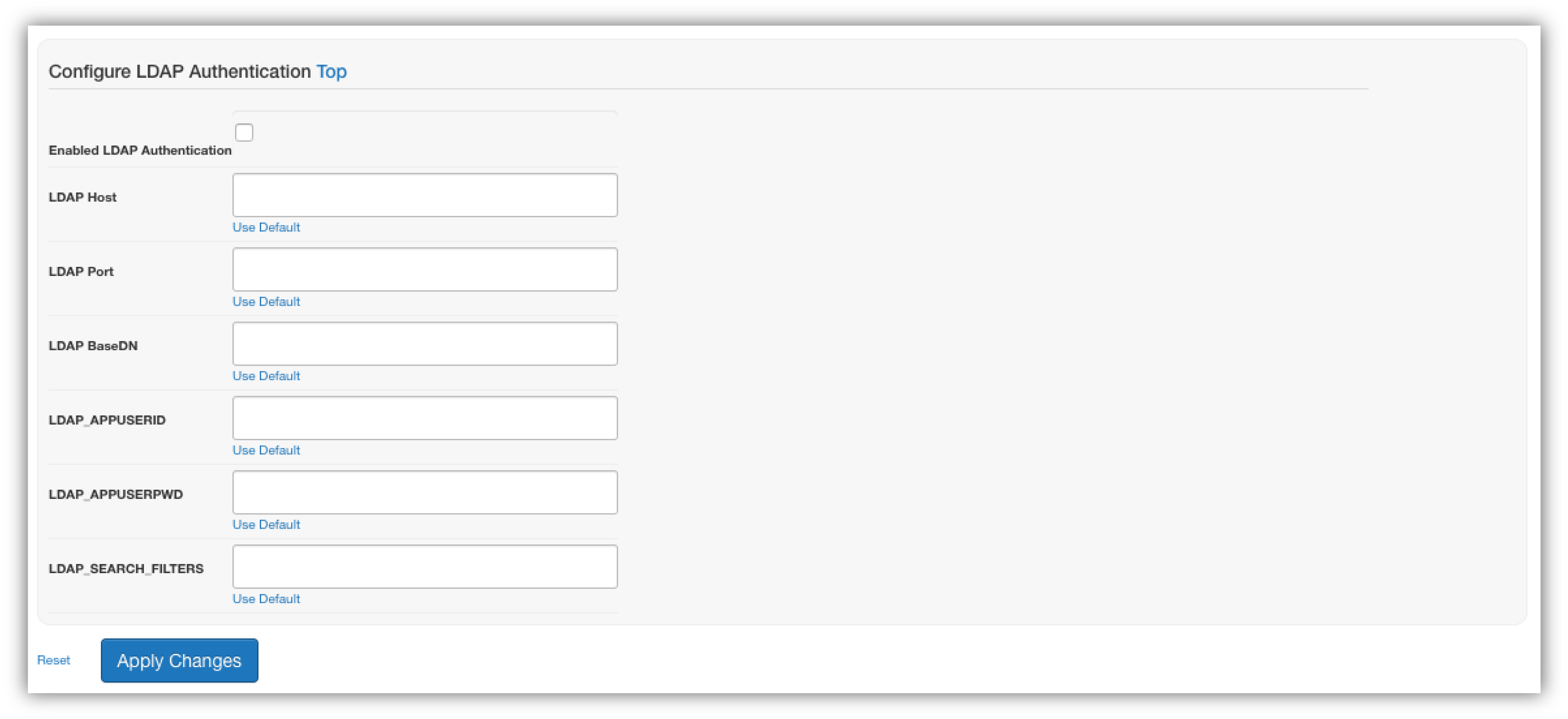
Figure 27: LDAP Settings
Logs¶
One the side panel, click on the section, “Logs”. Here, you can view all logs on the platform and under which user it was performed.
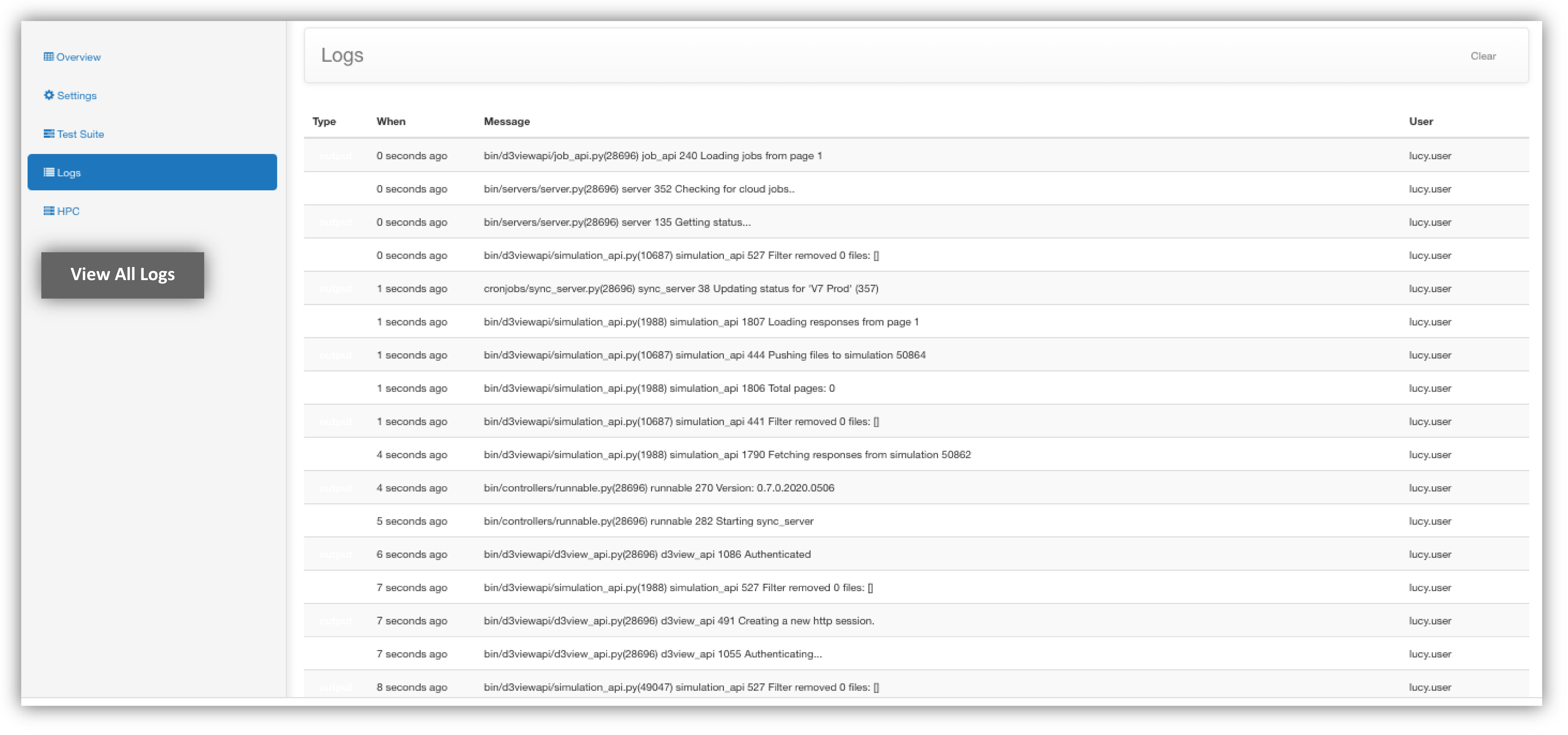
Figure 28: View All Logs
Below video shows how to nagivate to HPC settings page and view all the settings.
3.6. Email settings¶
Mail settings in Administration includes several MAIL Settings for the user.
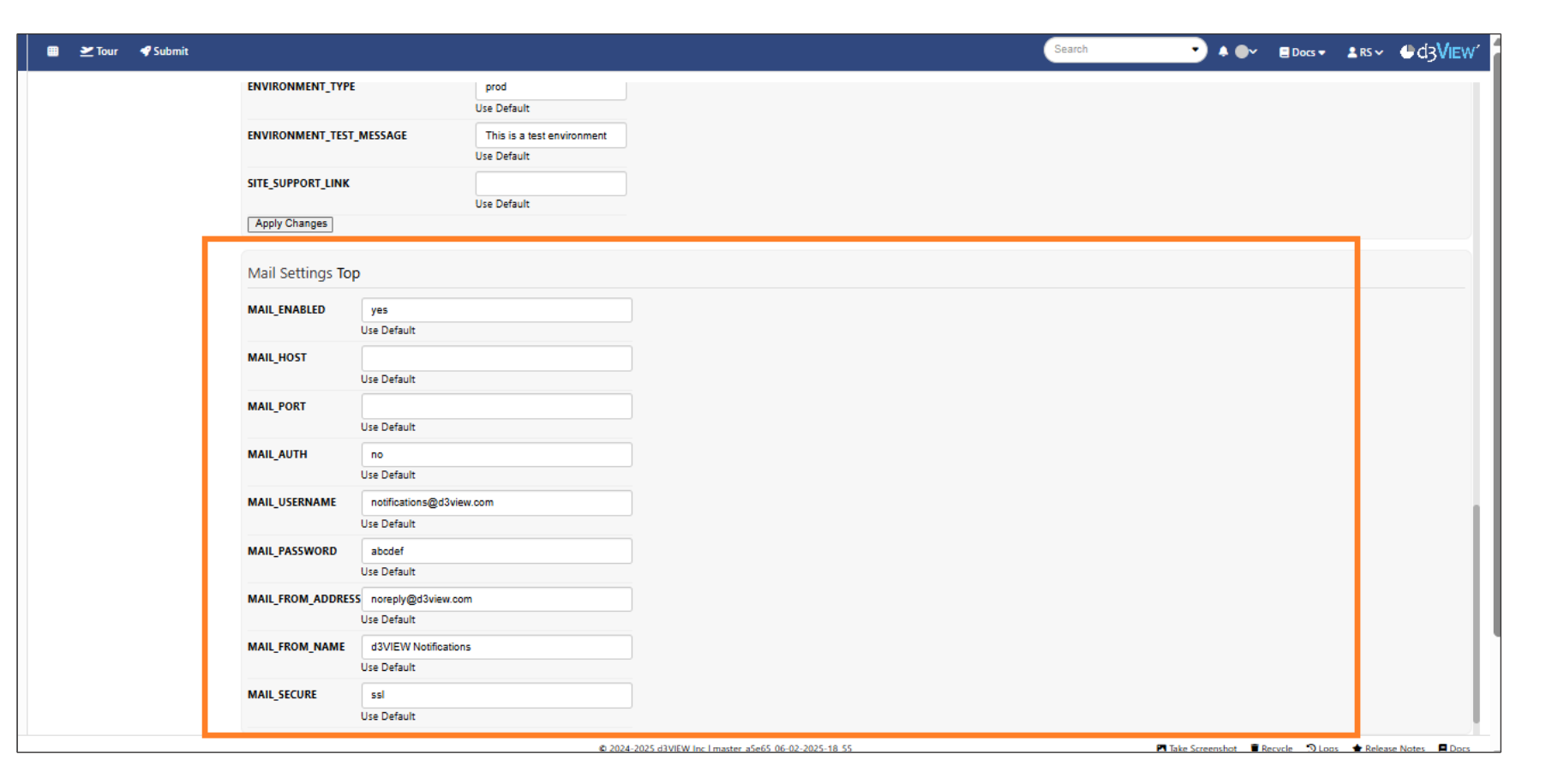
Email settings